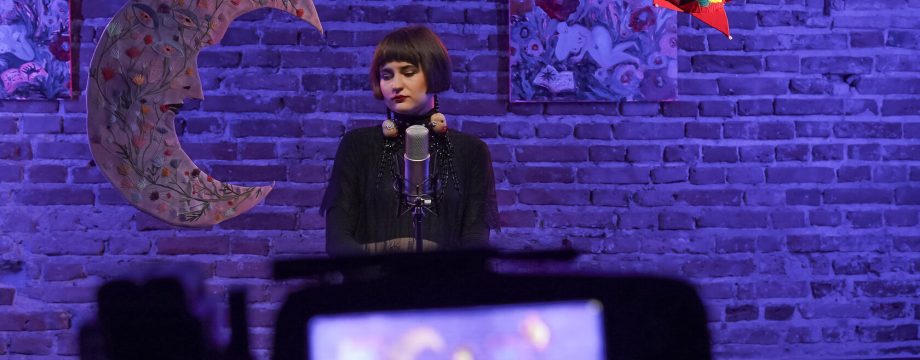Cinema: The important premiere of Mara Tamkovič’s film and the struggle for the presence on the cinema map of Europe
Traditional culture: harlačkas (women’s neck decoration) come into fashion, and folk songs expand presence in current releases
Theatre: repression, turbulence and nullification
Music: Slowed down Brownian motion, or Preparation for preparation
Art: body language, actionism and appeal to nature
Cinema: The important premiere of Mara Tamkovič’s film and the struggle for the presence on the cinema map of Europe
The end of spring – summer – the beginning of autumn – can be considered the most fruitful season in cinema. This is usually the time when most of the new films are shot. Belarusian filmmakers scattered around the world are forced to submit not to their creative plans and shooting schedules, but to harsh reality. For many of them, filming is just ahead: on the agenda – finding financing for projects, trying to adapt to the unusual conditions of emigration, and most importantly – understanding their new situation, understanding what to shoot about in new circumstances. Judging from the topics at the pitches and the few premieres, Belarusian cinema is still experiencing the collective trauma of 2020. How to move on? This is the main existential question to which there is no answer yet.
The main film about 2020 Belarus
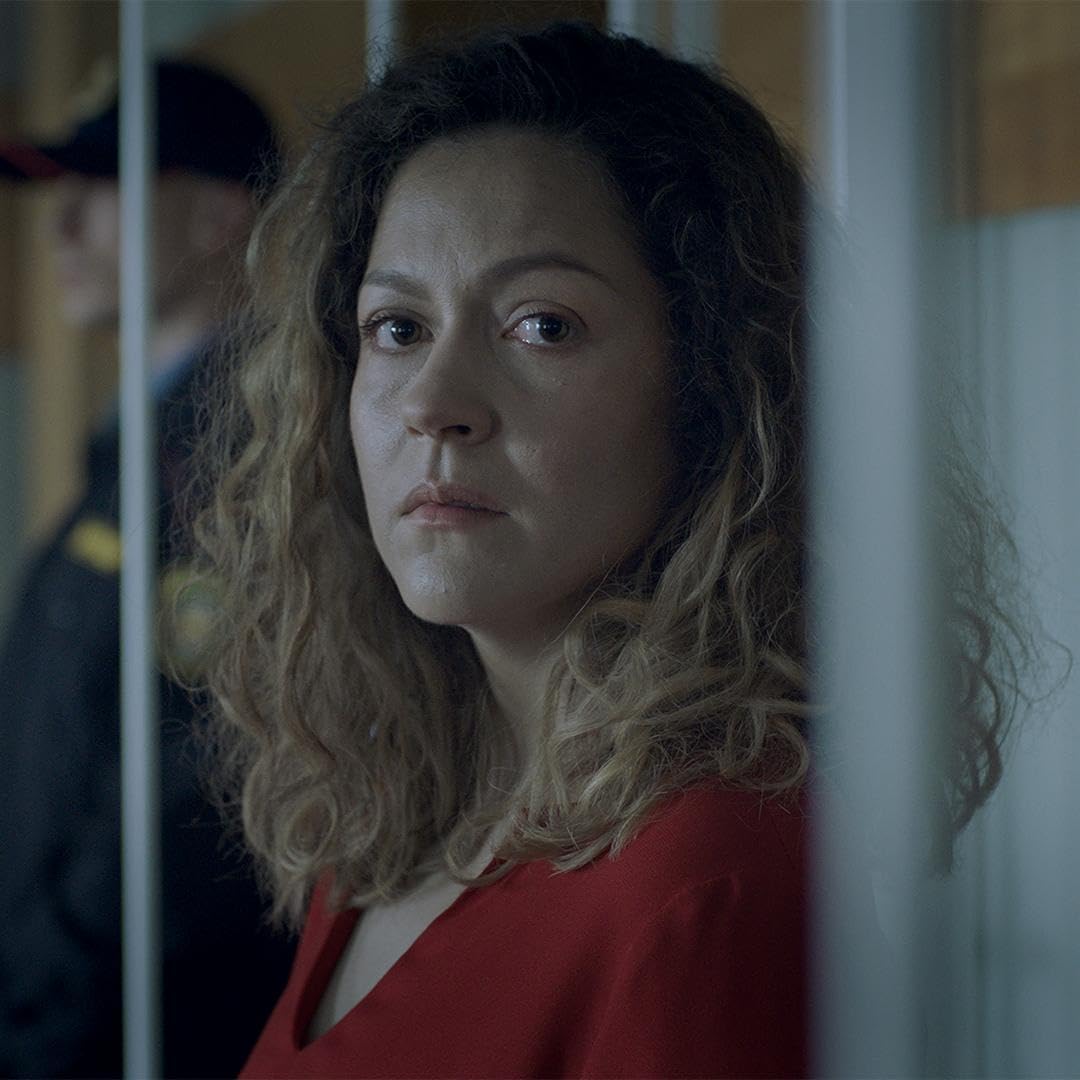
The main Belarusian film of this summer and, apparently, of the entire year 2024, “Under the grey sky” by Mara Tamkovič is precisely about the events of 2020 and their consequences. Thematically, this is a continuation of the director’s short film “Live”, which was released 2 years ago. The plot of “Under the Grey Sky” is based on the dramatic story of a Belsat journalist and political prisoner Kaciaryna Andrejeva (Bachvałava). On November 15, 2020, she was arrested together with a journalist Darja Čulcova while streaming from Pieramienaŭ Square in Minsk. Kaciaryna is still in prison.
It is clear that the film was shot outside Belarus, in Poland, where Mara Tamkovič studied at the Warsaw Film School and Wajda School and has been living and working for a long time. “Under a grey sky” is a good example of the integration of Belarusians into the European cinematographic space, it was created jointly by Belarusian and Polish cinematographers: Ułada Siańkova, Neła Ahrenič i Marusia Jasinievič helped Mara Tamkovič work on the script, the roles were played by Belarusian actors who speak Belarusian and Russian in the film. But the film crew consisted of Polish professionals, including a cinematographer Krzysztof Trela.
On June 7, the world premiere of the film took place within the international competition programme of the TriBeCa festival in New York. The fame of the festival, its openness to creators from different countries, and high media coverage testify to the high level of the international launch of Mara Tamkovič’s film. The film was noticed among others: respectable American film resources and commentators wrote articles about “Under a grey sky”. Earlier, the film aroused interest in Europe as well.
And on September 27, in Gdynia, at the Polish Film Festival, Mara Tamkovič’s film, which took part in the main full-length competition, won the prize for the best debut. If we take into account the traditionally high level of competitive works and famous names of their authors, this award of the Belarusian director can be considered very significant.
However, the prize and high evaluations of the reviewers can be explained not only by a very actual topic. The majority of reviewers note a high professional level of “Under the grey sky”. Mara Tamkovič herself emphasizes in an interview that her film cannot be considered only a documentary reconstruction of events. “Under a grey sky” is a topical political film, but at the heart of it is a psychological drama of heroes who do not want to be swayed by circumstances and, despite everything, continue to fight for the truth, freedom and their love.
The Polish Institute of Cinematography joined the financing of the film, but the budget of 250,000 euros, which the creators had at their disposal, currently looks quite modest for a full-length feature film. The film is distinguished by a certain minimalism, there are no large-scale shots. Mara Tamkovič’s talent lies precisely in the fact that for an hour and a half she holds the audience’s attention with the help of an emotionally difficult story without special effects and mass scenes, exclusively with camera directing techniques.
The film impresses even those who know little about the events and situation in Belarus, while the author does not provide a general overview. But according to a small fragment of the Belarusian reality embodied in Mara Tamkovič’s film, one can feel the tension of the Belarusian drama even more deeply than after watching dozens of television reports. “Under a grey sky” is an actor’s movie, it is based on the performers of the main roles, Alaksandra Vajcachovič and Valancin Navapolski. The actors managed to create very true and vivid portraits of actual heroes, which are so rare in contemporary Belarusian cinema.
Mara Tamkovič studied with Polish masters of directing for a reason. Her realistic full-length debut is clearly created in the tradition of Polish psychological film drama with an acute social tone, which has its roots in the cinema of the seventies and eighties. “Under a grey sky” is currently the real flagship of Belarusian national cinema, which is forced to operate under foreign production. It is devoid of artificial pathos and has nothing to do with political film speculation, which, unfortunately, is not uncommon among artistic works about the Belarusian revolution of 2020.
Mara Tamkovič’s film is now the most serious and successful attempt to interpret contemporary Belarusian events in national cinema, from the point of view of international publicity as well. It is obvious that the general collective trauma will become a source of stories for Belarusian filmmakers for a long time. The issue, however, is the extremely limited capabilities that the latter have.
Cinematic portraits of the diaspora and “yabatskas” in a crooked mirror

The satirical project “ChinChinChannel” offered its new series “BelGosPsiHoz” («БелГосПсиХоз» – in Russian) in September. The low-budget YouTube project continues to mock the realities of the modern dictatorship in Belarus. And this time in the crosshairs we have the negative types: officials, policemen, supporters of the government – “yabatskas”. With an obvious lack of funds, the authors of the project find opportunities to create comprehensive, clear portraits, which one after another are combined into a collective portrait of the neo-totalitarian system.
Other portraits of Belarusians who ended up in emigration against their will were offered by the creators of the YouTube documentary project “Artefacts. The Museum of Free Belarus”. This is perhaps the first serious attempt to speak about the Belarusian diaspora. The authors work in the style of a television documentary – their work is rather journalistic. In total, the project has five parts, each dedicated to a certain well-known person and, accordingly, to an exhibit in the Warsaw Free Belarus Museum, through which this person is presented: human rights defenders Alina Nahornaja and Ihar Słučak, a sports journalist and blogger Alaksandr Ivulin, a musician and producer Papa Bo (Alaksandr Bahdanaŭ), an artist Rufina Bazłova, and an activist and blogger Ina Zajcava.
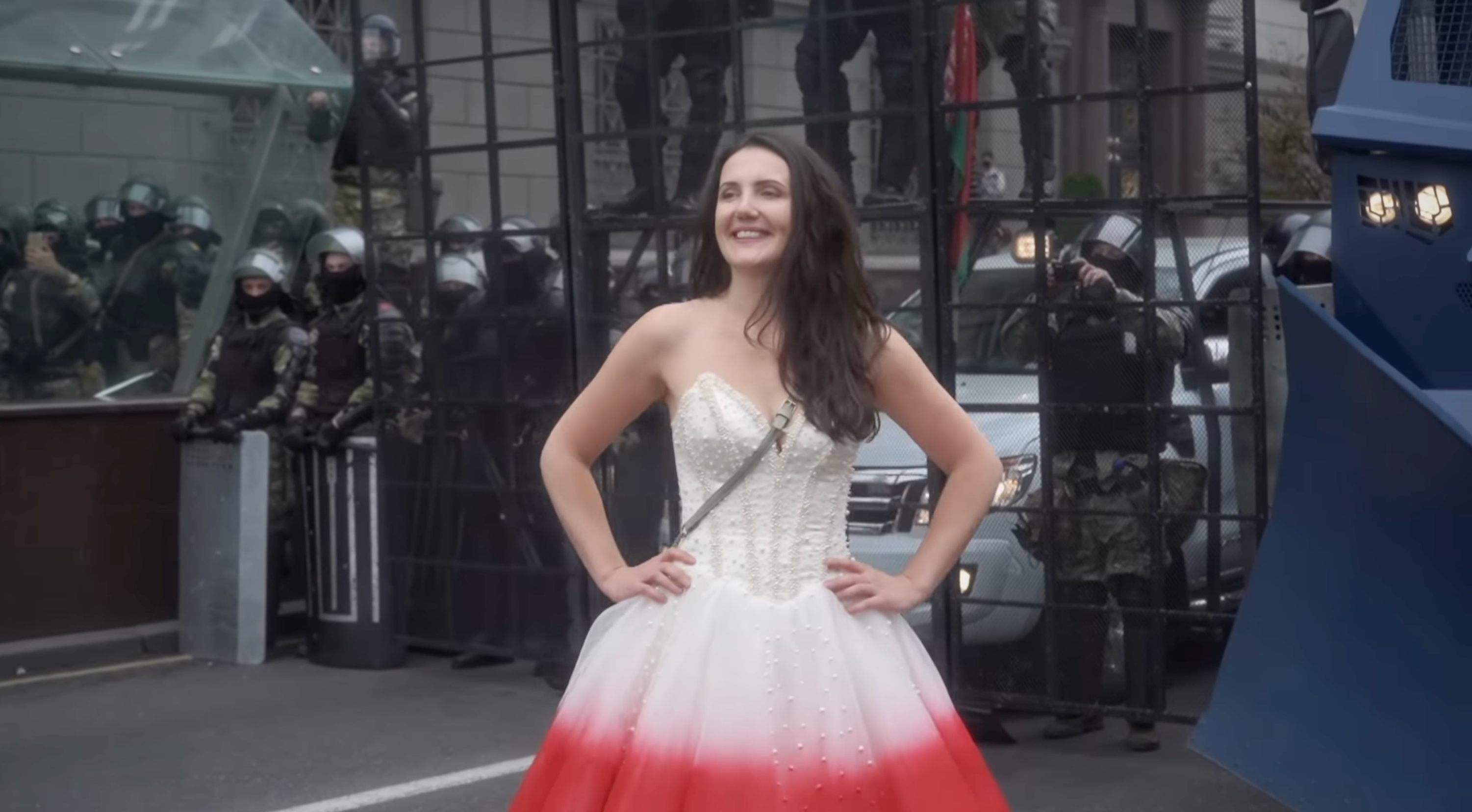
Undoubtedly, there is a demand for coverage of the life of the Belarusian diaspora, and the project “Artefacts. The Museum of Free Belarus” is only the first attempt. It is obvious that there will be more reflections on the topic of Belarusian migrants.
One of the first efforts in this topic was the once experimental work of a documentarian Maksim Švied “The Last Night Shift” («Апошняя начная змена» – in Belarusian). Its premiere took place last year at Bulbamovie in Białystok, after which the film was presented several times in Warsaw, including in August this year. This is a witty short film compiled from video messages in the messenger. Documentary fragments of reality are compiled into a special feature film story. Thus, the author could do with a minimum of funds, creating a truly no-budget movie.
But such cases as Maksim Švied’s film (by the way, he is also the author of two parts of the project “Artefacts. The Museum of Free Belarus”) are rather an exception, because movies usually require a lot of money for their production. And our cinematographers have big problems in this regard. Getting financing in the countries where they came to settle down only a few years ago is not an easy task. In fact, the successful work of Belarusian emigrant filmmakers depends entirely on how well they have adapted and how closely they are involved in the local film industry.
Undoubtedly, it is easier for those who, like Mara Tamkovič, received a local film education and have experience working with local filmmakers. Belarusian-born Darja Žuk has been living in the United States since she was 16 years old and has already shot several commercial films for television there, but her most famous work at the moment – the full-length debut “Crystal Swan” («Крышталь» – in Belarusian) was filmed in her homeland in Minsk and Barysaŭ several years ago. Taćciana Zamiroŭskaja, the author of the story “Exactly what it seems”, was born in the latter. It is going to be screened by Darja Žuk, and the film will be produced by Belarusian Vola Čajkoŭskaja and Estonian Ivo Felt, who is also known for his work on Christopher Nolan’s blockbuster “Tenet”.
“Exactly what it seems” is a story with a fantastic plot about the “time travellers”, a couple of Belarusian migrants who, through some mysterious anomaly, end up in modern Belarus from America. In fact, this plot about how Belarusian migrants now see their homeland can become a new step in Belarusian national cinema and its interpretation of the fate of the Belarusian nation.
To find your place in the global industry
As for the integration of Belarusians into the world industry and film community, the Belarusian Independent Film Academy (BIFA) along with national film academies of other countries became one of the founders of the Federation of European Film Academies (FACE). This should allow Belarusian filmmakers with a national position to gain a foothold on the European film map.
Activities such as participation in major international events (for example, the Cannes Film Festival) help to make a statement. This year Belarusians took part in the discussions within the film market in Cannes: documentarian Alaksandr Michałkovič (“Homeland”) was a speaker during the Creating in Exile round table, where the experience of filmmakers who were forced to leave their native countries was discussed. And producer Vola Čajkoŭskaja took part in the panel discussion Filmmakers Collectives Rising up in Eastern Europe, where the main topic was the forced participation of documentarians in social and political cataclysms.
The political factor and activism is a bitter everyday thing for our filmmakers. An important semi-cinematographic event was the struggle for the fate of the director Andrej Hniot, who was threatened with extradition from Serbia to Belarus. The campaign with open letters to the Serbian authorities was organized by the Belarusian Independent Film Academy with the support of the European Film Academy.
Perhaps the most optimistic news in recent months was the “Unfiltered Cinema” festival. Its organizers were forced to move the screenings from Minsk to foreign countries due to persecution. This time it took place in three cities at once – Vilnius, Helsinki and Berlin – and, as always, in one of the programmes, it presented a digest of current Belarusian filmmaking, made outside the borders of the industrial model, practically with a no-budget mindset. The momentum, enthusiasm and talent of the authors of the films showed once again: Belarusians have always had, have and will always have the desire and curiosity to make films.
Traditional culture: harlačkas (women’s neck decoration) come into fashion, and folk songs expand presence in current releases
In another review of events in the field of traditional culture, we will analyze: dances, singing, crafts, holidays.
Compared to the previous analyzed period (January – March 2024), we see a further expansion of curiosity about traditional dances among the Belarusian diaspora, the releases with modern arrangements of traditional songs, and the continuation of the publication of authentic audio material (the “Tradition” project).
Dances
Traditional dances remain an essential part of the concert programmes of folklore groups operating under official cultural institutions. However, dances are rarely demonstrated on stage in their original form, as they were performed at village parties, strongly stylized both in choreography and musical terms. In rural life today, traditional dances do not occupy a significant place, the space reserved for them is amateur art.
Urban lovers of traditional culture are trying to restore rural traditional dances in their original form, but a big obstacle is the insufficient (although already considerable) number of published video recordings with traditional culture bearers. Traditional dance classes and parties are held regularly or from time to time in at least four major cities of Belarus, as well as in Vilnius and Batumi. Dance meetings are held at least once a month or more often in six Polish cities, and from time to time in two more. Perhaps the meetings there will become regular – there is a request from local Belarusian communities for this. In Warsaw, at the moment, three teachers are organizing regular classes of Belarusian traditional dances for adults, two of whom opened groups this year. In Minsk, on the contrary, the number of teachers is decreasing: in the last academic season, six groups worked, and in this academic year, only five training groups started.
The trend of recent months is the growing attention to quadrilles (figure dances for several couples, more often for four or two). They have been performed in the Belarusian urban dance community for quite some time, but recently three significant publications have appeared that have contributed to the popularity of this type of dance (one, two and three). In addition, quadrilles have begun to be taught in dance communities of Belarusians abroad. A master class in Belarusian quadrilles was held at one of the dance summer camps in Lithuania, where quadrilles are also very popular.
The dance movement in Belarus is more centralized than abroad: it is concentrated in the capital, from where trends and tendencies travel to other cities. Belarusians who now live outside their native country are more dispersed, but independent “centres of influence” are forming among them: people learn new dances, steps, and enrich their experience by attending, for example, Polish parties (the Polish dance movement is also decentralized). There is a school of bagpipers in Warsaw, which teaches mainly dance music. As far as our analytical group knows, there are no other options for regular classes in Belarusian traditional instrumental music outside of official cultural institutions and individual meetings.
Singing
Singing groups operate in almost every rural club in Belarus, but there are quite a few groups that perform not stylized, unprocessed songs. Singing is also popular among urban lovers of traditional culture, but it is not practised as widely as dancing. We know of regular singing classes in the new academic year in at least four major Belarusian cities, three Polish cities, and Vilnius. In Białystok, you can visit a Belarusian group or classes by Julita Charytaniuk, who works with Podlaskie songs in local dialects.
In singing classes among Belarusians abroad, our analytical group notes a sad trend: a lack of understanding of the stylistics of traditional singing, the use of techniques typical of folk-stage or choral performance. Problems with the upper voice are especially noticeable. I would like to recommend the Belarusians living in Poland to have classes with Ukrainian teachers who work on Paliessie material.
Among the new releases, it is worth noting the clip “Oh, to the Sun” (“Ой, да сонца” – in Belarusian) by the Warsaw men’s traditional singing group “Kasary”. One might wonder whether a song with the addition of modern music still remains in the vein of traditional culture. The answer to this question will be positive if the main role of the melodic line of the folk work, on the basis of which the interpretation is made, is preserved, and elements of modern music decorate it.
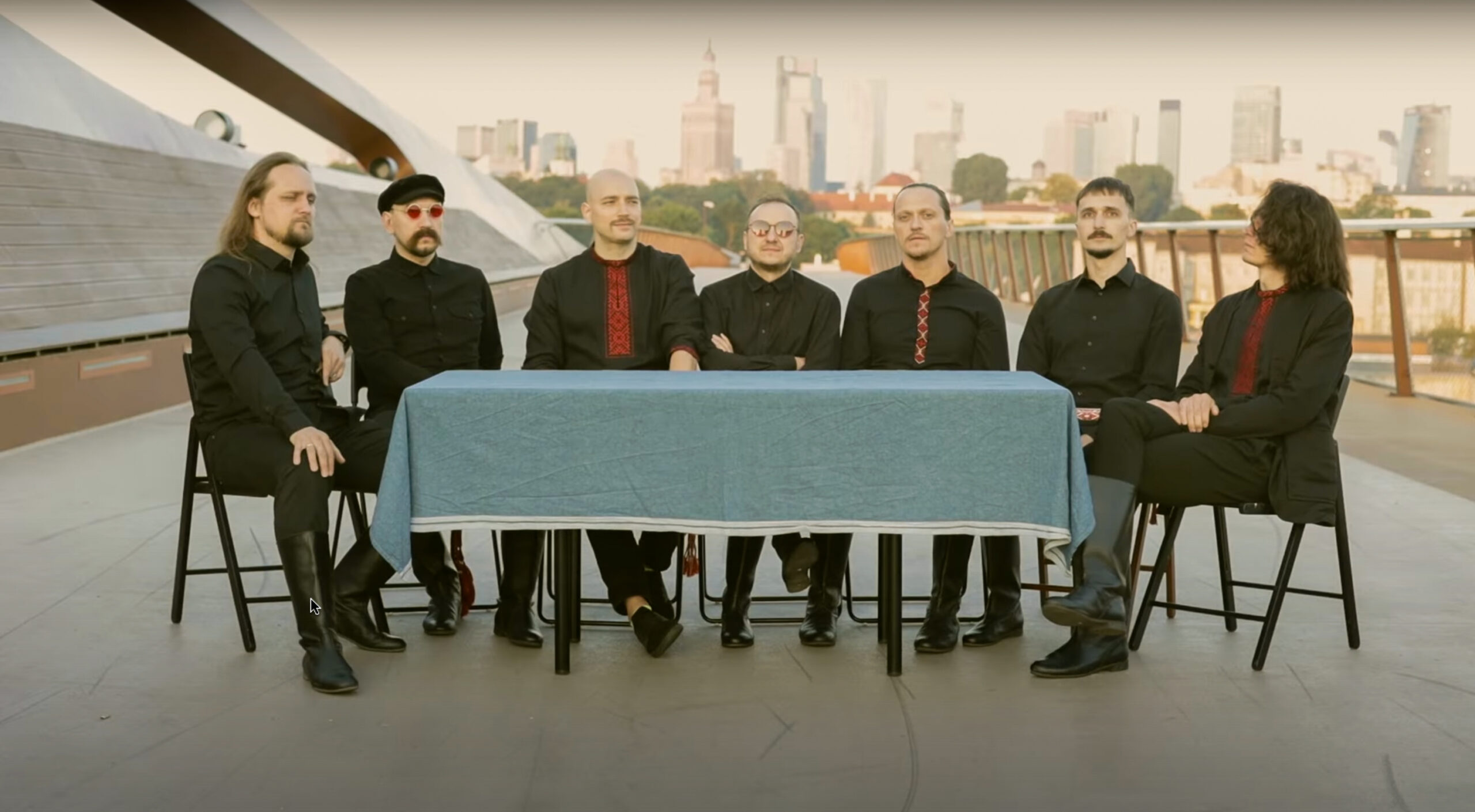
In the release “I walked and walked” (“Хадзіў-пахадзіў” – in Belarusian) by the Ralla band, musical additions to the traditional song come to the fore, so this work would be better analyzed in a music review, rather than in a section dedicated to traditional culture. However, it is worth noting the professional approach of the band to providing information about the song it interprets: the name, when and by whom it was recorded, and in which edition it was published.
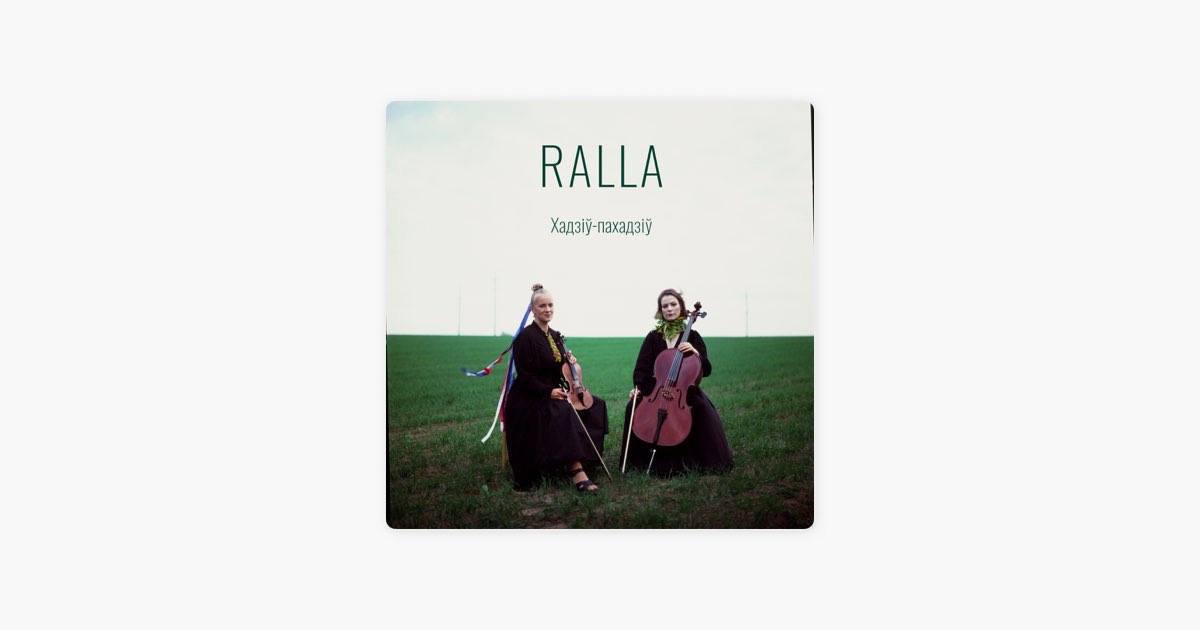
The label “Tradition” has released an album by the authentic band “Kaliažanki” from the Stolin region in the series “The Best of Belarusian Folklore”. Fundraising is currently underway for the next editions: next up is the band “Cierabianačka” from the Pinsk region.
Crafts
Of all the traditional crafts, the most popular is the production of traditional costumes. Regular classes are held in at least one major city in Belarus and may resume in the new academic year in Białystok. An exhibition of reconstructed historical and Belarusian traditional costumes by Kaciaryna Vadanosava was on display at the museum in Ciechanowiec in Eastern Poland until October 23.

Author – Michał Hžeś, Centre of Belarusian Culture in Białystok
Women’s neck decoration – a harlačka – is becoming increasingly popular. It was worn as part of the traditional costume in the Vietka and Brahin districts, and now this type of jewelry can be seen more and more often on urban fashionistas who combine it with modern clothing. This trend is noted by some Belarusian media (for example). The classic harlačka has a raven’s eye pattern (as in the photo above), but modern craftsmen also make their own interpretations, most often not on a mesh, as in the original products, but using the bead weaving technique (the result is a solid canvas that can have any patterns). Where is the line between traditional craft and artistic creativity? In the opinion of our expert, only harlačkas with a raven’s eye pattern can be called traditional, even if they are made in different colours.
The offer of master classes in traditional crafts is very modest. Perhaps for this reason, announcements of master classes such as making “Slavic dolls” or “wishing candles” appear in the public space from time to time. If such educational products are sold (and not cheaply) under the guise of spreading Belarusian traditional culture, then this phenomenon should be described as “profanation”. For those who spread and consume such knowledge, we recommend books about traditional crafts by Jaŭhien Sachuta and Volha Łabačeŭskaja.
Holidays
Among the most important traditional holidays in April – September, it is worth mentioning Easter / Vialikdzień, Trinity / Trojca, Kupalle, Dažynki, Bahač. The first two were considered great (significant) in traditional, rural culture. Kupalle and Bahač in the late 19th – early 20th centuries (the period from which most classical ethnographic sources come) were not celebrated throughout Belarus, but in modern Belarusian society their role has grown, and today these holidays are perceived as nationwide. Dažynki occupy a significant place in the official discourse of the Belarusian authorities, but in their current form they hardly resemble the celebrations described in ethnographic sources of the late 19th – early 20th centuries.
Easter / Vialikdzień is a movable holiday, the date of which is calculated according to the solar-lunar calendar. This year, the Orthodox celebrated it on May 5, and Catholic Easter was on March 31. We wrote about the latter in the previous review. In the traditional calendar, Christmas, Easter / Vialikdzień and Trinity / Trojca are the main holidays, which were celebrated in one way or another throughout Belarus. In the Christian tradition, they are associated with the life path of Jesus Christ, but they also have pre-Christian meanings associated with the agrarian year and the change of seasons (ensuring fertility for the next calendar period, winter and spring Navalećcie, the time of lush vegetation).
Today, Easter / Vialikdzień in Belarus is the most popular traditional holiday. It is celebrated primarily by believers, and those who do not go to a church during the year try to visit a temple at least once a year, consecrate willow branches on Palm Sunday or have Easter food on Easter itself. It is worth noting that such an instrumental perception of Easter may not involve participation in the service. Belarusians who do not visit religious institutions often nevertheless paint eggs for Easter, bake or buy buns. In the circles of urban lovers of traditional culture, the rite of vałačobnictva (ritual Easter rounding of households) is sometimes revived.
Trinity / Trojca – a movable holiday, the date of which is calculated as follows: the 57th day from Easter for Catholics, the 50th for the Orthodox (this year it was May 19 for Catholics, June 23 for the Orthodox). The Trinity / Trojca is celebrated by villagers and believers, but in the urban non-religious environment this holiday is almost not represented.
Kupalle – a holiday of pre-Christian origin, timed to the summer solstice (in 2024 – June 20). In the Christian calendar it’s attached to the eve of the birthday of John the Baptist, which Catholics celebrate on June 24, and the Orthodox – on July 7. Kupalle was not celebrated throughout Belarus. In some local traditions, the functions of this holiday were transferred to Trinity / Trojca or Peter’s Day (June 29 for Catholics, July 12 for the Orthodox). This holiday began to be perceived as a nationwide one through the activities of Soviet cultural institutions in the 2nd half of the 20th century. Kupalle is also celebrated among urban lovers of traditional culture both in Belarus and abroad. For Belarusians abroad, it is gradually gaining the importance of the main holiday of the year: the Days of Belarusian Culture are timed to Kupalle time all over the world, even if the folklore component does not occupy a major place there. Some communities of Belarusians abroad do not celebrate any other calendar holidays except Kupalle.
Dažynki. Many dates of the traditional calendar, when certain products were consecrated, have the symbolism of a harvest festival: The Honey Feast of the Saviour or Honey Spas, The Apple Feast of the Saviour or Apple Spas, the Assumption of Mary, and Bahač. Harvest festivals in the traditional calendar were not assigned to a specific date, but were held in order of the completion of the harvest and were a family-neighbourhood, not a village-wide celebration. In Soviet times and in independent Belarus, they acquired the character of a nationwide harvest festival and are most often held in the autumn, that is, later than in the traditional calendar.
The Orthodox celebrate Bahač on September 21, and Catholics on September 8. Under the name of the Nativity of the Blessed Virgin Mary or the Nativity of the Mother of God, the holiday is known throughout Belarus, and under the name Bahač and similar ones, referring to the symbolism of a rich harvest, it’s known in the Hrodna region and in the southern and eastern parts of the Minsk region. Bahač in the traditional calendar is only one of the holidays of the new harvest, and not necessarily the main one. It is associated with the day of the autumn equinox, but is inferior in the number of elements associated with this astronomical event, the Feast of the Cross / Uźvižańnie. In modern Belarusian society, Bahač is represented by animations of employees of official cultural institutions and celebrations organized by city lovers of traditional culture. Together with Christmas / Kalady, the Call of Spring / Hukańnie viasny and Kupalle, Bahač forms a circle of holidays that structure the life of Belarusian communities both in Belarus and abroad.
Theatre: repression, turbulence and nullification
In the autumn of 2024, the national theatre entered its fifth turbulent season. The emotional swing has become a reality, the rules of the game are supposedly defined, but keep changing in the process. Specific numbers of the personnel purge, the change of power in the Academy of Arts and the refusal to finance emigrant projects are in our review.
In Belarus
The spring and summer of 2024 is the time when news about the dismissal of directors and artistic directors of theatres became regular. From April to September, the artistic directors of the Viciebsk “Lalka” theatre (Viktar Klimčuk) and the Opera Theatre (Valancin Jelizarjeŭ), the chief director of the Youth Theatre (Andrej Huzij), the directors of the Minsk and Homieĺ Puppet theatres (Dźmitryj Siamionaŭ and Dźmitryj Harelik), as well as the RTBD (Sviatłana Karukina), lost their positions. Of them, only Siamionaŭ was promoted to the Minsk City Executive, the rest retired or went into obscurity.
A logical question arises about the scale of such layoffs. For this, our analytical team conducted a little research. 2020 and 2024 were compared in terms of the number of directors, as well as artistic directors and/or chief directors (some theatres have one of them, others have both) who have retained their positions since then.
The results are as follows. There are currently 28 theatres in Belarus. Of them, the mentioned leadership remained completely in only six: in three Minsk theatres (the Gorky Theatre, the Film Actor Theatre and the Belarusian Army Drama Theatre), one regional (the Hrodna Puppet theatre) and two regional ones (in Pinsk and Slonim). Speaking separately by category, 12 theatres have retained their directors, only 10 of them still have their original artistic directors and/or main directors.
Naturally, not all examples are related to politics. For example, two directors died, someone retired due to ill health, etc. But globally, we witnessed a personnel revolution, which clearly did not benefit the theatre. None of the newcomers led their teams to prosperity and breakthrough. If the situation has not worsened with their lead, it is perceived as a positive.
However, the freedom of those who remained is relative. For example, Eduard Hierasimovič has been the director of the Gorky Theatre since 1983 (it’s a record compared to his colleagues). It would seem that a more loyal person cannot be found. However, now he has a deputy in charge of security, regime and personnel – Juryj Miečasłavavič Pietrašeŭski. The person with the same first name, middle name and last name in 2018 was a police major, head of the criminal enforcement inspectorate of the Maladziečna police station. As they say, trust but verify.
The change of management is logical in its own way: the authorities are purposefully clearing the theatre of the former personnel. But the inevitable changes come not only from the “head”, but also from the “tail”: this year university graduates (who entered higher educational institutions in 2020) joined theatres collectives, when the domestic theatre was to some extent starting life with a clean slate. We already faced the same problem of nullification in the nineties, when the studio theatres that arose during the last years of the USSR and created an alternative to stationary theatres disappeared. But professional education still existed in a relatively good condition then. During the 2000s and the 2010s its level fell behind the West and Russia further and further.
Repression after 2020 dealt another blow to the field and led to the retirement of dozens of teachers. Meanwhile, a new management came to the theatre faculty of the Academy of Arts. Uładzimir Miščančuk, who was the dean since 1990, switched to a teaching job, and Natalla Bašava took his place. But her Chamber Drama Theatre, created in 2010, has not manifested itself since then, its productions have never been included in the Belarusian programme of “TeArt” – the most prestigious festival of the 2010s. The know-how of the theatre faculty has become the unification of the departments of acting and directing, which is nonsense for theatre education. Conservative Ryhor Baravik, who is far from theatrical innovations, was appointed to manage the united department. Meanwhile, it is the people they have brought up who will determine the face of the future national theatre.
The authorities remain true to themselves in the rest.
The connections with Europe are broken – the Belarusian branch of UNIMA – Union Internationale de la Marionnette / International Puppetry Association – was eliminated. In the poster of the Hrodna festival “Puppets over the Nioman” and the Brest festival “White Tower” – exclusively CIS countries are present (in the latter case, the Russian-Danish theatre from Copenhagen is an exception, but it performs in Russian).
The focus is on World War II. On the stage of the state Janka Kupała National Academic Theatre the second “Victory” festival took place, where plays on a military theme are shown. The project “Pathetic Diary of Remembrance” is staged in the The National Academic Grand Opera and Ballet Theatre of the Republic of Belarus, etc.
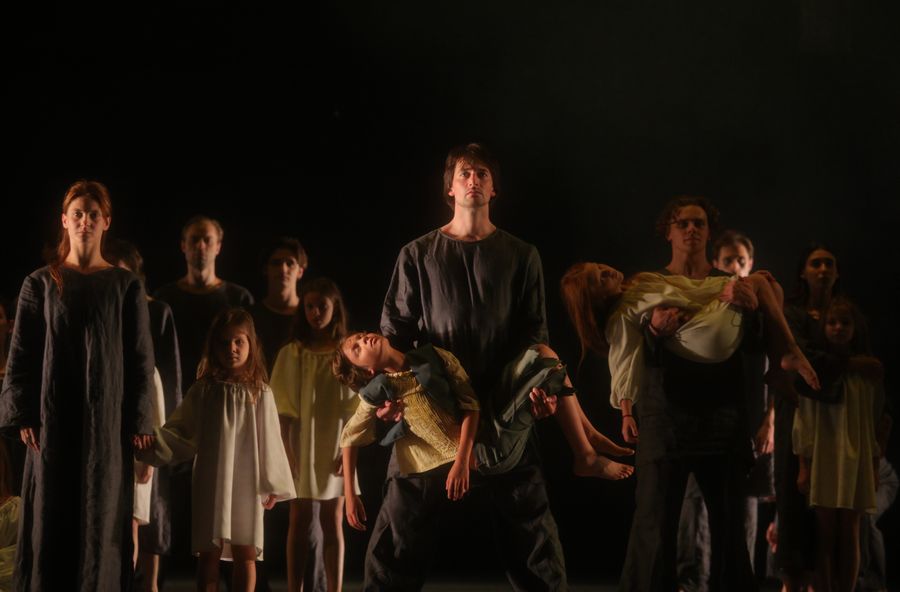
Russia remains the main partner and source of inspiration. The quality level of related products is different. Sometimes we get high quality projects. For example, the Sverdlovsk Music Comedy – one of the best musical theatres in this country – came to Minsk on tour. Also worthy productions were brought to the “Puppets over the Nioman” forum, such as “The Aviator” from Tatarstan: the main character’s doll is made of ice and in the course of the stage action, it gradually melts in the hands of the actor.
But at the same time, at the Belarusian State Academic Musical Theatre, they return to the musical “Blue Cameo”, which was already in the repertoire. It shows history from the Russian point of view and makes the heroine out of Catherine II, who seized our lands. And the director of the Theatre of Young Spectators, Viera Palakova, continues her Russification policy and stages new plays in Russian (although before her arrival, the collective was Belarusian-speaking). We may note that under her leadership, the Belarusian State Academic Theatre for Young Spectators is becoming more and more an enterprise project. An example was the comedy “36 and 6” directed by one of the little-known Russian directors. It is not at all clear why the theatre for children needs cheap comedies. Probably it’s needed for the director herself, who plays the main role.

Meanwhile, Belarusian drama remains in the background. In the best case, theatres turn to the time-tested works of the past (“Comedy” by Rudaŭ, which they staged in the New Drama Theatre, “Gates of Immortality” by Kandrat Krapiva, which they planned to stage in the Janka Kupała National Academic Theatre, or use retro themes (for example, “White Dews” in the New Drama Theatre, based on the script of a Soviet film). When it comes to contemporary domestic artists, the author of a several dozen Russian-speaking detectives Ułada Alchoŭskaja is given a chance. The plays of the original creators (for example, Kanstancin Sciešyk) are staged abroad, but not at home.
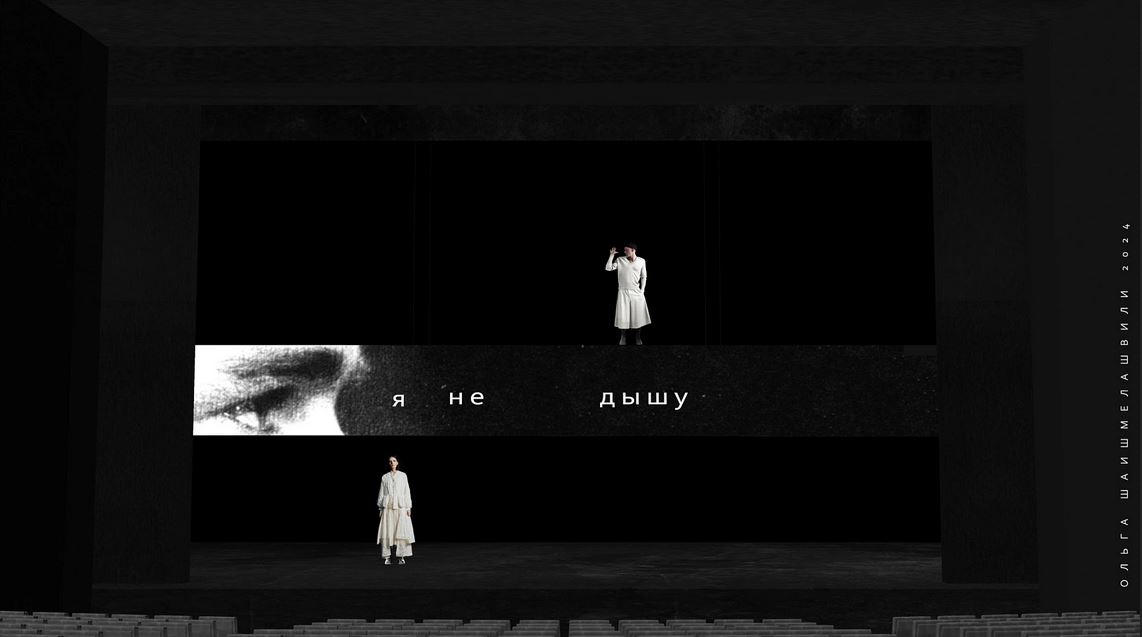
And abroad
The situation in the field of emigration theatre looks quite pessimistic. This is especially evident in comparison with other branches of art. In literature, the Hiedrojć, Arsieńnieva and Aniempadystaŭ prizes have been awarded for a long time, and the International Union of Belarusian Writers together with the Belarusian PEN are active. In cinema, the results of the “Red Heather” award have been summarized for the first time, domestic projects are represented at the “Berlinale”, the Film Academy operates as well. In April, the “Uwaga!” award was presented in one of the Warsaw clubs – the first Belarusian music prize in emigration, etc. And in general – even with difficulties – new books are published, tracks are released, films are shot and shown.
Theatrical art is tied to specific venues and requires the audience’s attention here and now, so it doesn’t feel the best. For example, the Belarusian Institute of Theatre regularly organizes interesting online discussions, but legally it is at the same level as in the autumn of 2023, when the founding congress of the organization was held.
We noted above that we are witnessing the beginning of the fifth season of turbulence. As for the emigrant theatre, we are talking about the fourth season (in 2020/21, the actors still mostly worked in their homeland). During the first two seasons, domestic artists still tried to act in the format of collectives with a more or less regular schedule. The 2023/24 season has shown that it is financially impossible. Some collectives ceased to exist (such as the Theatre of August), others finally abandoned the repertoire format and switched to rare individual performances. In the current financial realities, it is clear that such a format will be in demand for the entire period of theatrical emigration – until its disappearance or return to Belarus. Another solution is even theoretically impossible.
However, the new format also had its difficulties. The emigre project theatre had previously depended on external funding. For example, in Poland since 2021, many creators have been supported by the Ministry of Culture: in three years, almost 200 residents managed to implement new projects at various Polish venues. A number of them were shown only once, but working on them helped the creators to stay in the profession. But this year the programme remained available only to Ukrainians. Whether our compatriots will be able to rely on it in the future is still unknown.
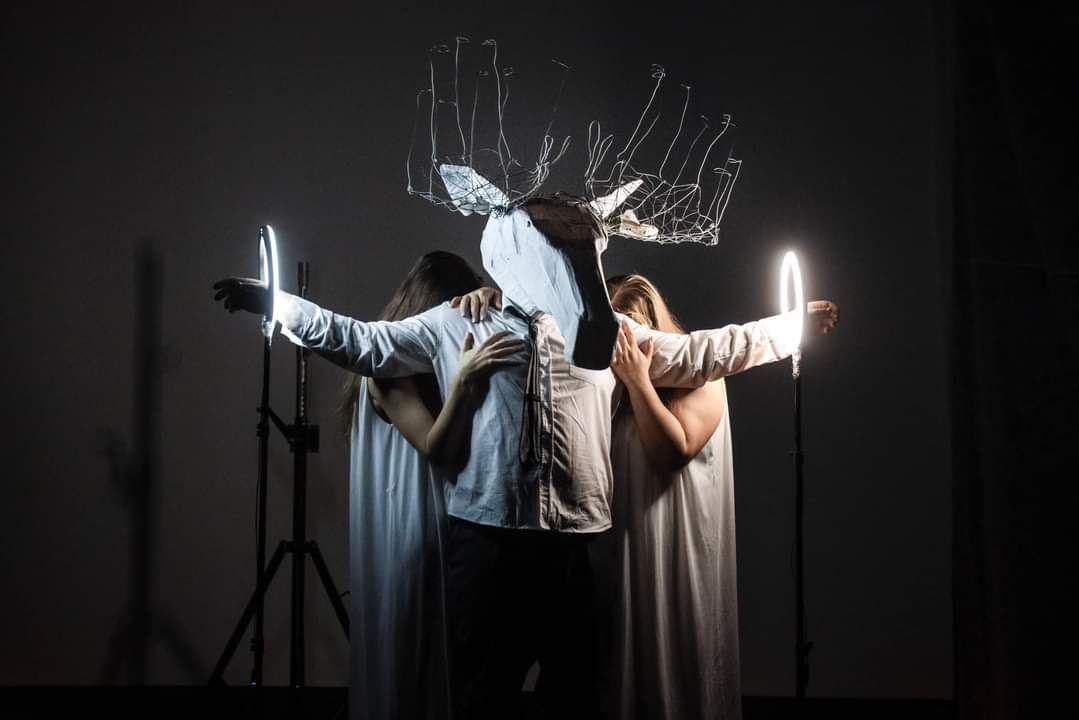
In addition to this problem, another one arose: theatre nullification also affected emigration. It was recognized as “extremist materials”. The YouTube channel, social networks and even the e-mail addresses of the independent troupe “Kupałaŭcy” were recognized as “extremist materials”. Actor Dźmitryj Jesianievič, who remained in Belarus but took part in the emigrant projects, was detained and served a two-week prison term (and was later forced to emigrate). Let’s add that the repression against him puts an end to participation in emigrant projects of actors who remain in the country.
Just at this time, “Kupałaŭcy” started a new page on Facebook. The project YouTube page is old, but only “Comedy of Judith”, “Sphagnum” and “Dziady” remained from the video productions. The rest are deleted. This can hardly be considered a coincidence. The reason, rather, is the right desire not to harm Jesianievič and his former colleagues who remained in Belarus. But because of this, the accumulated capital in the form of FB subscribers has zeroed, the audience has inevitably narrowed, and most of the performances created during the years of emigration are not available for viewing. And that means, to some extent, that the work needs to be started from the beginning.
Additional symbolism can be found in the death of Hieorhij Malaŭski, who left the Yanka Kupała theatre in 2020. He is the first actor who physically did not live till his return to the native stage. His departure from life makes you wonder what the troupe will be like when the return becomes possible.
However, the continuity with the affairs and projects of the previous years of emigration is still felt. In Poznań, Poland, the festival “The second attempt” (“Другая спроба” – in Belarusian) happened, dedicated to the underground theatre movement of the Belarusian and Ukrainian immigrant communities.
And in autumn and winter in Warsaw the second Inex Fest festival takes place. The organization of such a forum by the initiative of Inexkult thanks to the support of the Ministry of Foreign Affairs of Poland is admirable. But the stated number of performances (eight) forces one to soberly and without illusions understand the degree of demand for Belarusian theatre art abroad.
Literature and the book business: THE ALPINE BALLAD ABOUT THE DICTATOR
The six months that have passed since the previous release have been marked by some changes in the concept of this review. The half-year time frame allows us to take a slightly more general look at the situation with books, their authors and publishers in Belarus and abroad. The conclusions of the author of these lines may seem to some to be beyond the competence of a literary reviewer, but perhaps it is for the better, my dear people. Aren’t we a “political animal” or what?
Inside: Łukašenka as an author
Official propaganda, having recovered from the stress of 2020, has developed a style and pathos that, in their opinion, correspond to the current situation, which has affected, among other things, literary life in Belarus. On June 11, during a press conference on the occasion of the 90th anniversary of the Union of Writers of the Belarusian SSR, they generated positive news related to the pro-government literary pool. It seems that they have finally solved their most important problem in it. Namely, in a lively, relaxed discussion, they suddenly found a counterpart to “War and Peace” in the new Belarusian context. We are talking about a project for a collection of works by Alaksandr Łukašenka himself. Propagandist Valer Šumiłaŭ proposed the idea, and the board of the Union of Writers supported it.
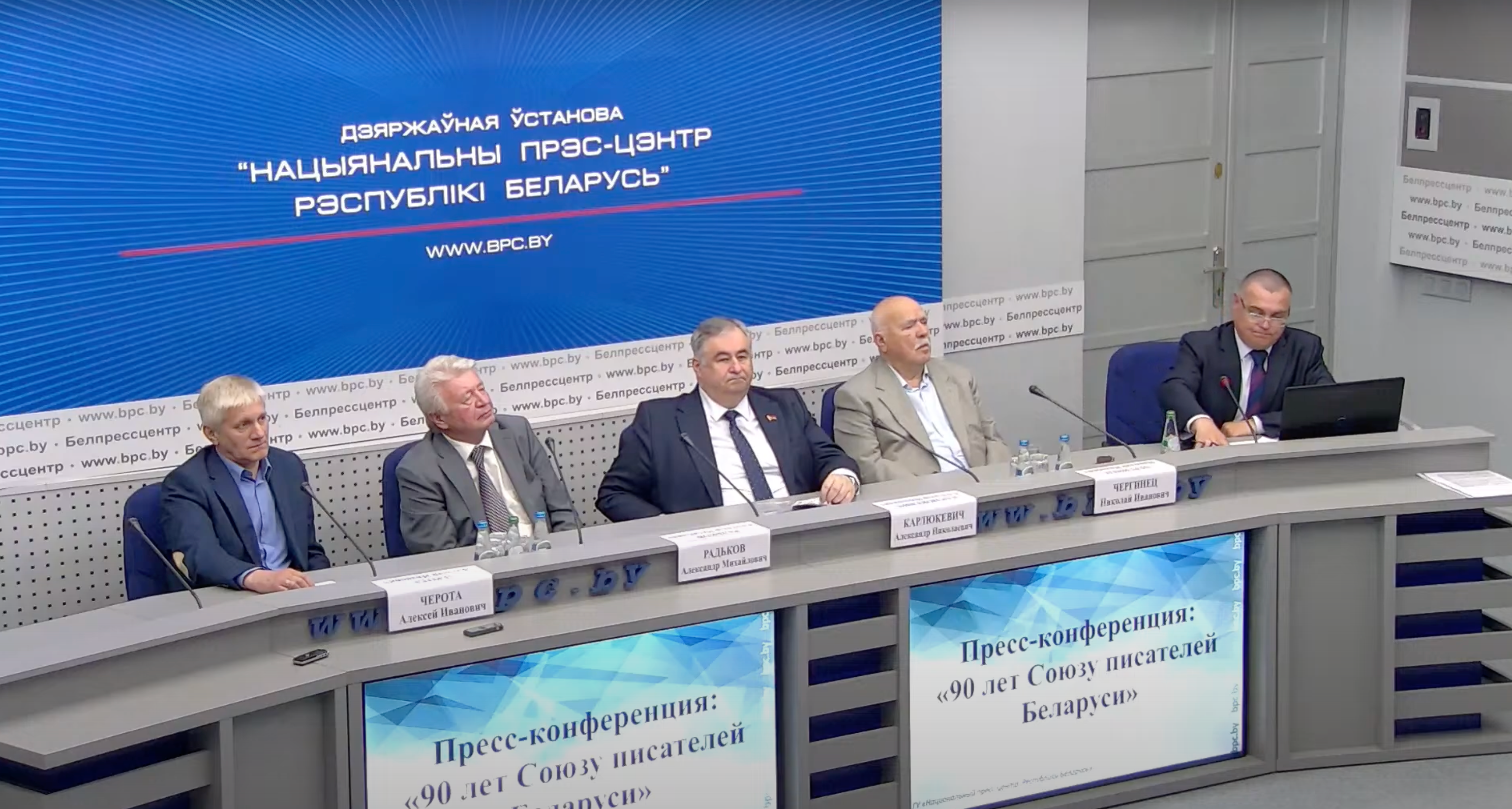
Let me remind you that modern epics of the level of Leo Tolstoy’s “War and Peace” and Mikhail Sholokhov’s “Virgin Soil Upturned” are a social order to writers formulated by Łukašenka in 2014. He reproached Belarusian authors for ideological schism, and guaranteed state loyalty and financial support only in exchange for a great – in every sense – work.
And now, it seems, the literary functionaries have finally deciphered the presidential hint and made the right decision. Brilliant and simple. And I’m hardly being ironic.
The epic “Epoch of Łu” has already been written. All that remains is to format and design it. The texts authorized by the leader – that is what is really needed. The work on their compilation and publication is technically simple and at the same time profitable for the industry of official authors, as it results in a solid project for the absorption of budget funds. And justifies the fact of the existence of a literary artel in the state vertical.
There are signals that the board of the Union of Writers has taken the idea seriously and is able to approach its implementation professionally. The current chairman Aleś Karlukievič called the idea excellent and stated that it is important to maintain “the accuracy of quotes and sources”. But Mikałaj Čarhiniec set a high bar for the new writer: “Alaksandr Ryhoravič, look for that pen (…) and come on, please, get down to the books – our people really need them.”
These reactions clearly indicate a change of milestones in the pro-government Union. From writers of the old formation, who think of a literary text only as something specially created, the initiative is gradually passing to professionals who understand literature in accordance with global trends. If Sviatłana Aleksijevič received the Nobel Prize in Literature for her processed interviews with witnesses and participants in various events, which until recently was considered a journalist’s craft, then why can’t Łukašenka’s speeches and interviews over the 30-year history of his rule be published, rethinking him as a writer?
Unfortunately, by the end of September there was no concrete information about whether at least the first volume of such a collection was being prepared. The concept, structure and approximate content of the publications were not announced. Will the collection of works be organized chronologically (in the traditional way – it is not recommended, since one would have to start with the ideologically chaotic 1990s) or by genre (an innovative approach used, for example, by Aleś Razanaŭ in his later years and partly by Nił Hilevič, who managed to compile authorial collections during their lifetime)? There are many questions. One thing is clear: the idea was voiced within the framework of an unspoken propaganda installation to start a “soft” cult of Łukašenka’s personality. The leader’s “false modesty” was finally overcome by his entourage.
But if you approach the implementation responsibly, then the honestly performed work on the volumes will not be in vain under any authorities, as it will be useful to political scientists, historians, and other specialists. In short, I wish you to work fruitfully, dear colleagues.
And I’d like to add a few more words about the conference dedicated to the 90th anniversary of the Union of Writers. It reminded us of the conflict of succession that has been taking place among Belarusian writers since 2005. According to all indications (archive, library, card index of members), the independent Writers’ Union, liquidated on October 1, 2021, has continuity with the organization founded in 1934 by Kupała and Kołas. But the official Union, as we see, is the one that ultimately declares continuity. Thus, we can state a specific intra-Belarusian variety of cultural appropriation, when subjects endowed with power appropriate the achievements of opponents who have been deprived of their rights.
Outside: Harecki
Judging by the feed of the bellit.info portal, at the end of September new editions were distributed between publishing initiatives inside and outside in approximately a 1:1 ratio. For comparison, a year ago we stated the advantage in favour of domestic publishers as 2:1. But such parity, unfortunately, was achieved not by increasing the activity of emigrant publishers, but by reducing the capabilities of domestic publishers. At the same time, the 1:1 ratio also applies in Belarus – such is the balance of books published by state and independent publishers today.
In the previous paragraph, I, of course, evaluate the books that are a phenomenon of literature: we exclude textbooks and workbooks with contour maps from the statistics. Instead, we include scientific monographs (workers of the National Academy of Sciences of the Republic of Belarus) or cartoons based on children’s poems (Andrej Skurko).
The literary process in Belarusian is still outwardly inseparable: books by authors who remain inside are published abroad (for example, Natalla Kučmiel’s poetry collection “Golden” (“Залатое” – in Belarusian) was published by the Pflaŭmbaŭm publishing house, and Aksana Danilčyk’s poetry collection “Time of External Absence” (“Час знешняй адсутнасці” – in Belarusian) was published by “Skarynapress”). As a result (according to the author of this review) of the surge in public activity in the diasporas that occurred in 2020, new players are joining the literary field. A number of Belarusian activists abroad are increasingly confident in realizing themselves in the literary and book business. The initiatives of Audiobooks.by (USA – Poland) or the aforementioned London publishing house “Skarynapress” are relatively old examples. In September, the news came about the release of the English Volha Janoŭskaja’s translation of Maksim Harecki’s novel “Two Souls” (“Дзве душы” – in Belarusian) by the Belarusian publishing house Grunwald Publishing in Canada. (It’s hard to say what the definition of the book’s genre as historical fiction is connected with, except perhaps with some intra-American logic of the book market. In fact, “Two Souls” is a socio-philosophical novel from the early 20th century, which, in hot pursuit, interpreted certain processes in Belarusian society. But, as the saying goes, let it be for the good.)
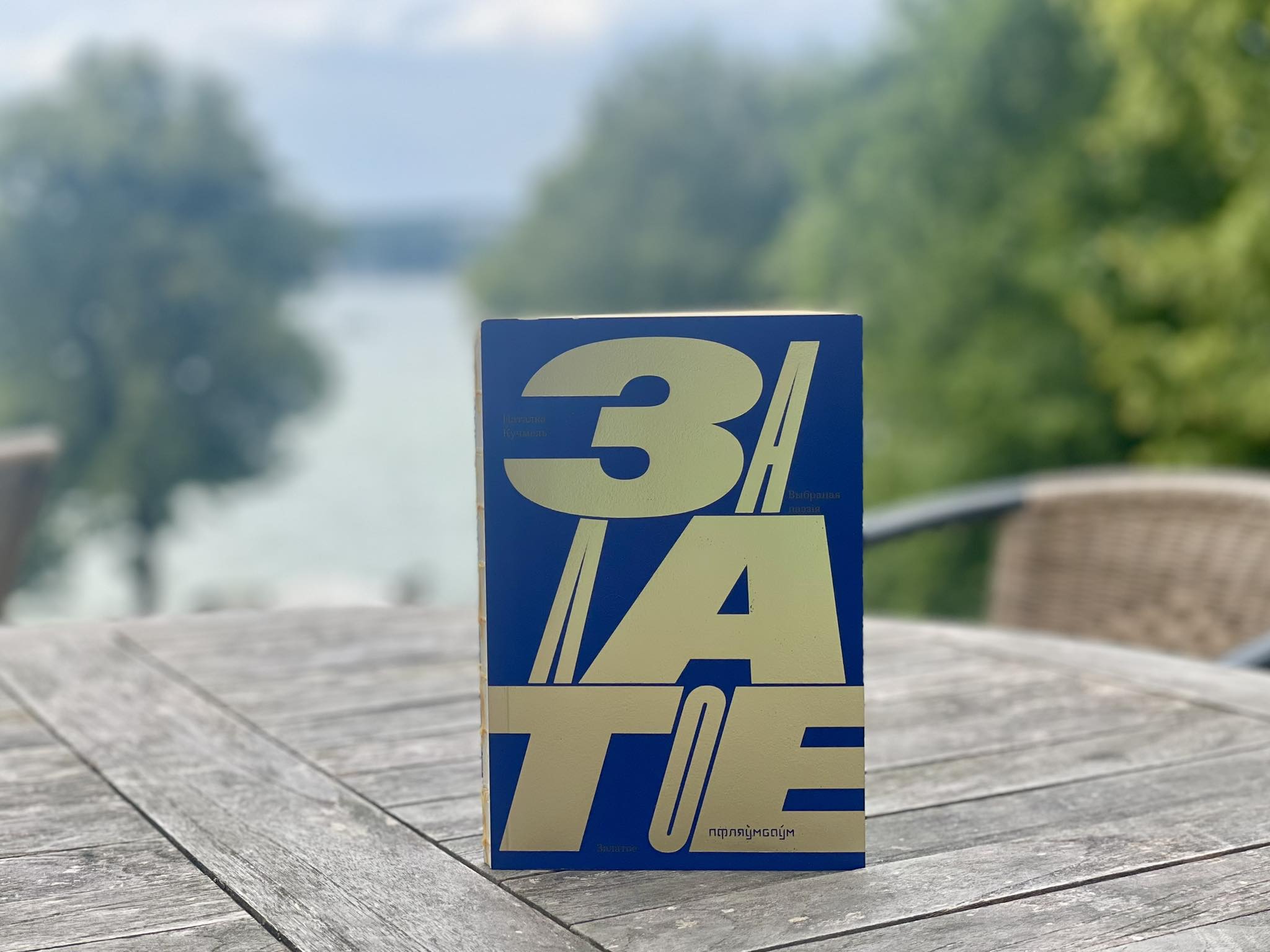
In September, in Warsaw they announced the winners of the Natalla Arsieńnieva Poetry Prize for 2022 and 2023, and revealed the name of the winner of the prize for 2021 (anonymous until now). In chronological order: Darja Bialkievič, “Tears to the Wind” / “Слёзы на вецер” (“Januškievič”); Nasta Kudasava, “Close” / “Побач” (“Skaryničy”); Hanna Šakiel, “Almond Body” / “Цела мігдалу” (“Viłma”). It is noteworthy that here too, it is impossible to distinguish books by place of publication, and the experience accumulated in them is uniquely Belarusian.
Two Belarusians from Norway, from the cohort of literary translators and facilitators of the Belarusian literary process abroad, have (re)actualized themselves as authors. Maryna Chobbiel’s documentary poetry collection “The (Im)possibility of Writing” / “(Не)магчымасць пісьма” (hochroth Minsk) was published, and Darja Šut published a book in Norwegian, the autofiction Frihetens pris: min far, jeg og diktatoren (“The Price of Freedom: My Father, Me and the Dictator”, Vigmostad & Bjørke, Oslo), in which she talks about her 1990s through the eyes of the daughter of a politician who was in opposition to Łukašenka.
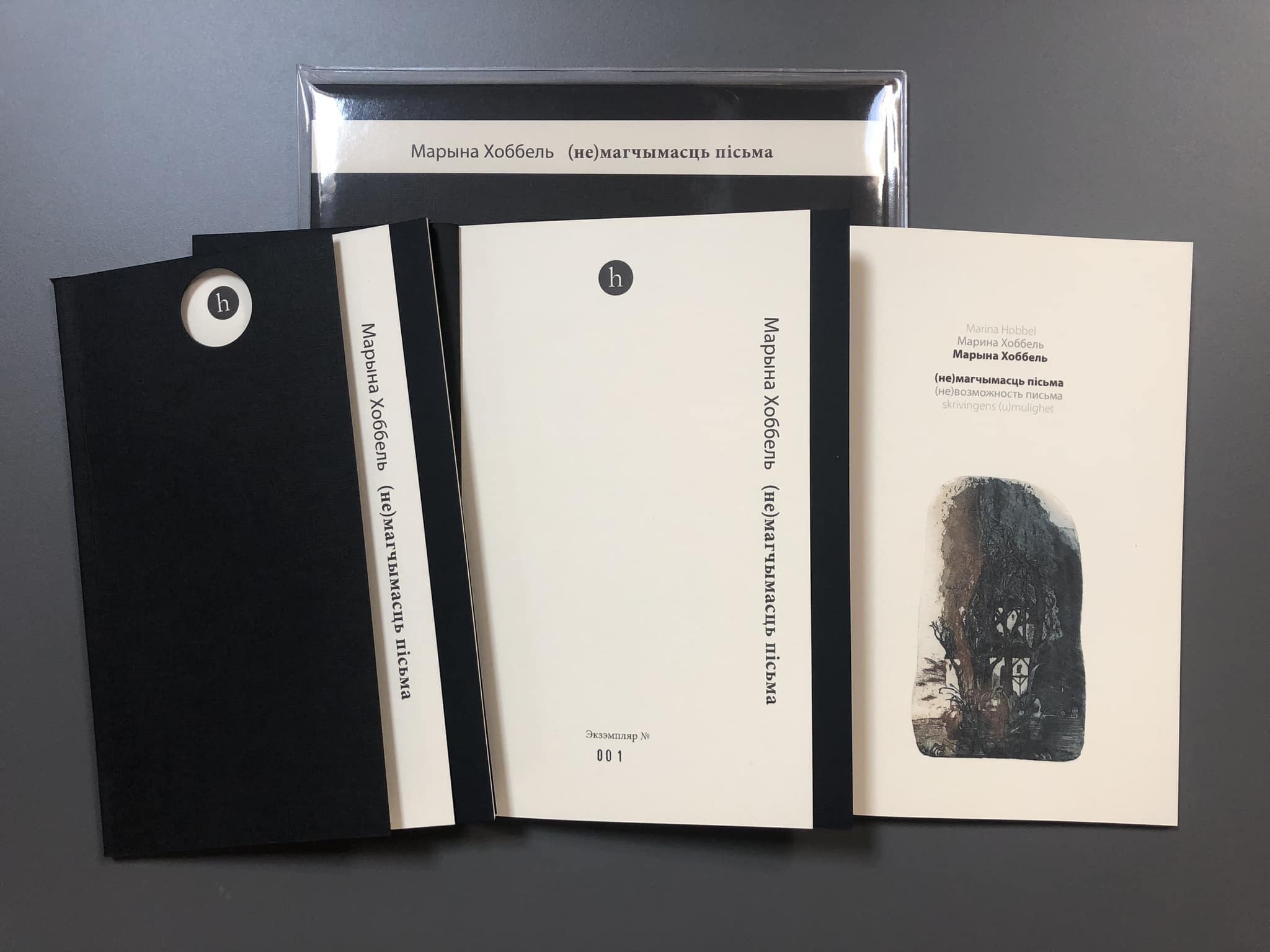
The six months covered by this review have shown that the excellent projects created over the past decade in Belarus, like that Russian rocker Tsoi, did not die, but simply went out for a smoke. Thus, in August and September, the Belarusian PEN revived the translation workshop of Andrej Chadanovič. The wir.by project has started working again. Over the three summer months, Maryna Kazłoŭskaja and Darja Bialkievič recorded 12 videocasts from the “Summer Reading List” series, with which wir.by continues its strategy of animating literary education. It is noticeable that the mentioned projects are heavily dependent on donor support, as evidenced by the nature of their work: short, but intensive. It is good that online content, like that vitamin D, is able to accumulate while the sun shines and can nourish the consumer until frost.
Another conditional reincarnation – Belarusians can once again support cultural projects for Belarusians with rubles (or, rather, with another currency). The phenomenon of crowdfunding (until 2020 we had Talaka, Ulej) has resumed outside the Bynet on a portal with a very similar collective name “Gronka”. A significant amount of the crowdfunding, of course, is directed at books or literary multimedia.
The field of Belarusian literature has clear limitations not only in Belarus, but also outside it. Externally, growth is manifested in an intensive strategy: we have two or three harvests from one plot per season. The poet Jula Cimafiejeva acted as a playwright with the play “Extremists” and Alhierd Bacharevič – as the author of the young adult novel “Captain Flying Fish” / “Капітан Лятучая Рыба”. The authors of the portal “Litradio” Pavał Ancipaŭ and Andrej Dudko founded an additional publishing house on their own initiative, calling it “Bald Skull” (according to the Russian-language obscene idiom). The publishing house was announced by the fact of the publication of Kanstancin Sciešyk’s novel “Every Hunter” / “Каждый охотник”, written in 2020–2022. Audiobooks.by has switched to publishing paper books in addition to its audio readings: the novel “The Martian” by Andy Weir, published in 2014 and adapted for the cinema film the following year, was released. The translator is Todar Som. “Zekameron” by Maksim Znak (“Free Kupałaŭcy”) and “What are you going for, wolf?” by Sviatłana Kurs (InexKult) were staged.
From the inside out: a culture of abolition of Belarusian literature?
In July, the independent book market continued to suffer from sanctions imposed on official Belarus for its complicity in military aggression against Ukraine. The publishing house “Januškievič”, currently registered in Poland, was denied the rights to publish the 4th and subsequent books about the wizard Harry Potter in Belarusian. A petition was created online to the Blair Partnership agency with a request to cancel this decision. By the end of September, more than 1,700 people had signed it. This case seems to be not an isolated one. At least, according to indirect signs, it can be cocluded that the Moomin Characters company, which owns the Moomin brand and to which the rights to Tove Jansson’s books have recently been transferred, is not allowing publisher Zmicier Kołas to complete the Belarusian edition of the series (so far, 7 out of 9 books have been published in Minsk). Other refusals by publishers are also known, which are not made public for reasons of prestige.

At the same time, in May, the publishing house “Januškievič” was shortlisted for the International Publishers Association (IPA) Prix Voltaire 2024, which will be awarded in December. And in September, Andrej Januškievič and his publishing house received the International Freedom to Publish Award from the Association of American Publishers. Thomas Weiler received the Paul Celan Prize for translating Bacharevič’s “Dogs of Europe”. Books by other Western authors are published in Belarusian without any problems. Among those that require a patent: S. King, J. R. Tolkien (“Januškievič”), the aforementioned “The Martian” by E. Weir, E. M. Remarque, and others. Thus, it can be assumed that the ban decisions are exclusively individual and are primarily related to minimizing public image risks for certain global companies. Unfortunately, it is worth noting: the Belarusian situation with the duality of the public community and the cultural field is specific, and we have not yet explained this duality at the global level.
Inside and outside: Homer and Bykaŭ
The main informational event of Belarusian propaganda – the 80th anniversary of the liberation of Belarus from the Nazis – directly affected literature in the country. For example, in line with the modern Society of the Spectacle, a school competition for the recitation of “works about the war” was held in Ivacevičy (September 1) on the day of Belarusian writing. The presentation of this important topic for propaganda has changed in just a couple of years: the restoration of the Soviet narrative about our heroic feat side by side with the Russians is still taking place, but at the same time, a new, mutually exclusive paragraph about the “genocide of the Belarusian people” during the occupation of 1941–1944 has been introduced into the old methodology. Belarusians, in this hastily constructed perspective, act simultaneously as a nation-hero and a nation-victim. The only way out for a person in such a narrative is to do their bit without going into details and forget it. After all, a serious attitude and an attempt to understand the updated message of ideologues can cause personality disorder and force one to ask questions that are guaranteed to result in a prison sentence.
Some experts have called the quasi-literary official narrative a cultural appropriation of Vasil Bykaŭ’s memory by the authorities. Perhaps this term really fits best. Other critics cautiously call it a “rehabilitation” of Bykaŭ, although the great writer was supposedly never repressed. The 100th anniversary of the classic was more than modest, if we are talking about the visual series and events. At the official level, this 100th anniversary of the Writer and Person was covered up with the faceless 80th anniversary of the liberation of Belarus. Unnoticeably, in fact quietly, a play based on “Sotnikaŭ” was staged at the Jakub Kołas National Academic Drama Theatre in Viciebsk (premiere – May 10). The RTBD in Minsk staged “Alpine Ballad” (premiere – May 6). Academic and museum events on the occasion of Bykaŭ’s anniversary were not banned, but did not receive proper coverage. Residents of the Viciebsk region were allowed to hold a modest event in Byčki, in the writer’s homeland. The May and June issues of the magazine “Роднае слова” (“Native word”) were published without censorship, placing methodological materials for teaching Bykaŭ’s work at schools under the name of the 80th anniversary of liberation. As they say, thank you at least for that.
In the independent space, events commemorating Bykaŭ were held online and on offline foreign platforms. The thematic publication “Bykaŭ’s Century” was published in June by the PDF newspaper “Literary Belarus”. In late September, an interdisciplinary conference “Vasil Bykaŭ’s Front Line: Between Literature and Cinema” was held in Vilnius.
In general, we can say that the eternally living classic of the 20th century celebrated his 100th anniversary in working order. The tone of commemorative events on both sides of the Belarusian border / front line is not even close to the carnival with which literary initiatives have started to celebrate the anniversary of Uładzimir Karatkievič every autumn. (Let’s see, by the way, what Belarusians will prepare for Belarus and the world this summer, for the 95th anniversary of the latter). It is quite likely that the difference in perception stems from the character of Bykaŭ’s personality and the pathos of his work. But Bykaŭ and Karatkievič have one thing in common: the level of conversation about their works completely refutes the thesis of postmodernists, who say that everything has already been understood and assimilated by world culture, and the fate of creators in the 21st century is repetition and replication. Bykaŭ and Karatkievič have not yet been properly understood and assimilated. Belarusians still have this pleasure ahead of them.
Undoubtedly, the event of the half-year can be called the release of Homer’s “Iliad” in the Belarusian translation by Lavon Barščeŭski. First, the book was published in parts in the country, in “Encyclopediх”, and in September an export version of the edition was released by the publishing house “Polack Labyrinths”. It should be noted that in this case, highly qualified, academic-level work is carried out by an intellectual who is ostracized by the official discourse. We have not seen a single announcement about the publication on official resources. Perhaps because the date of the liberation of Troy by the Achaeans from the Trojan invaders this year is not round.
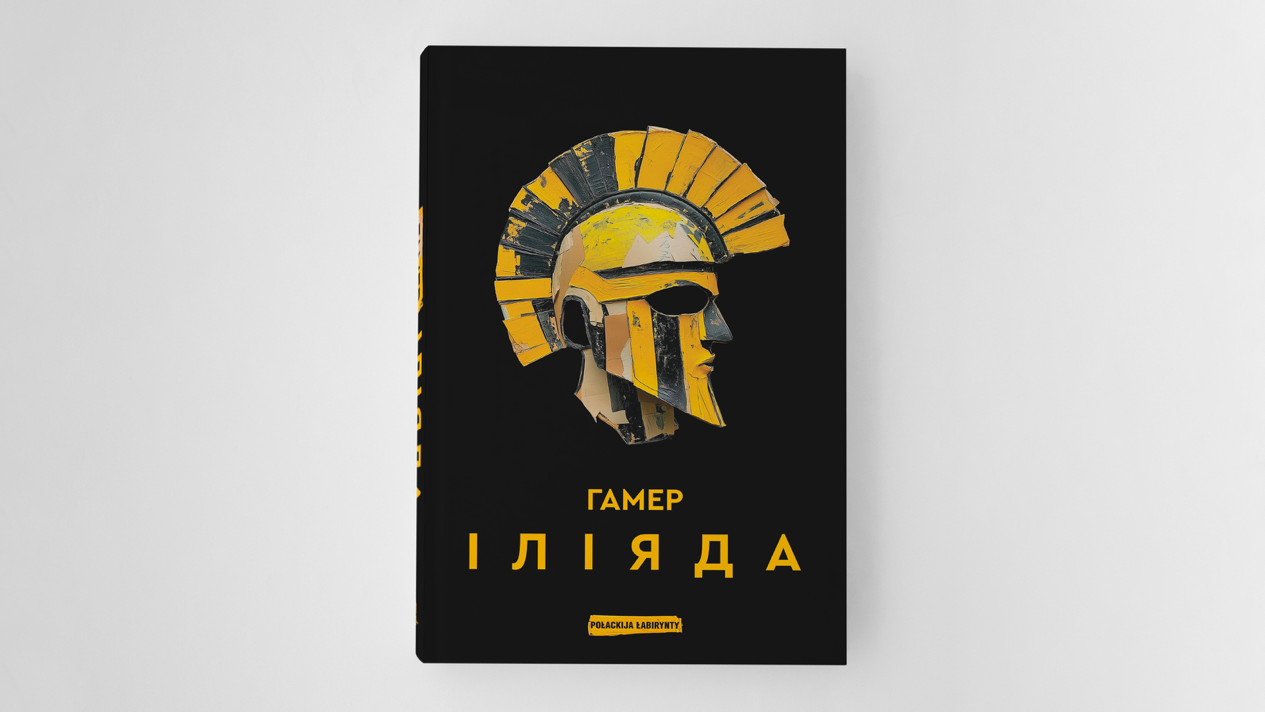
Fortunately, by law, Belarusian-language Homer can be found in the catalogues of the main libraries in the country.
Inside again: Łukašenka as a gladiator
September was officially marked by the cultivation of the historical date of September 17, 1939 under the guise of the Day of National Unity. In the mythology of the regime after 2020, this day is a symbolic reunion of “different kinds of Belarus”, which is positioned by the authorities as overcoming the split of the already modern society. This rhetoric is false at all levels, because in reality the split is only getting stronger: contracts in the field of culture are not being extended, creators associated with literature are being imprisoned or forced to leave the country.
It was on this day that a new propaganda product was published – “The Ballad about the Dictator”. As an exception, let’s analyze it as a literary phenomenon – because none of our colleagues would dare or just neglect to do it. First, let’s list the names of the creators, named by the official media. The author of the “The Ballad…” text is the Russian-speaking poet from Moldova Pavel Duganov. The author, known for his obscene language works, for the first time – out of respect for the high genre and the person of the addressee – did not use taboo vocabulary in the text. The author of the musical cantata to these words is the composer Valeryj Šmat, and the composition was performed by the art group “Belarusians”. The video series was prepared by the image editor of the newspaper “Belarus Today” Maksim Šnip. The whole thing was produced, it seems, personally by Łukašenka’s assistant Natalla Ejsmant.
In the poem, which formed the basis of the controversial ode, a fairly well-known code-switching technique is used: a concept widely recognized as negative is tried to be reinterpreted in a positive sense. The phrase “dictatorship of justice and goodness” is used. “Dictator” in the chorus rhymes with “gladiator”: in fact, A. Łukašenka is compared to him.
Although P. Duganov, as befits a real man, in his thoughts turns here to the realities of the Roman Empire, he is either not very familiar with them, or he is committing poetic sabotage. Gladiators were slaves who were forced to take part in merciless circus shows, where the alternative to death from the fangs of wild animals or the sword of a comrade was freedom from slavery. Only a few received it. And the gladiator whom the poet may have had as a prototype, Spartacus in fact, was a rebel (in modern Belarusian political rhetoric – a “protester”) who opposed the legitimate authority of the Roman Senate, consolidated around himself up to 100 thousand supporters and died in battle in 71 BC.
What is this song about then?
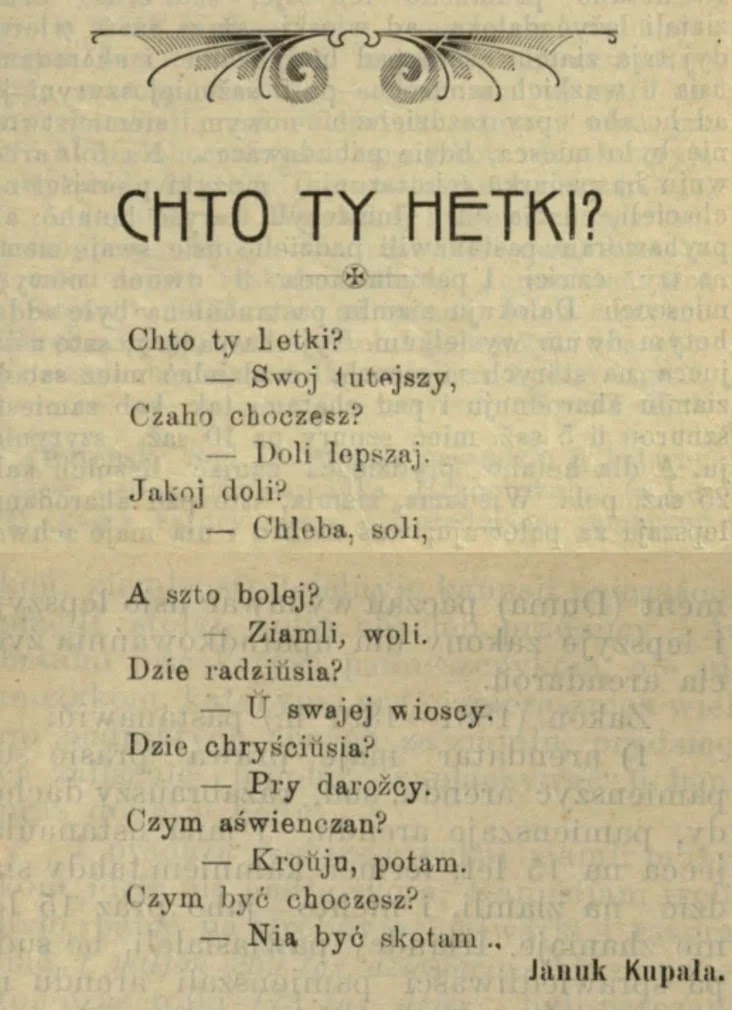
It is noteworthy that traces of cultural appropriation are also noticeable in “The Ballad…”. In the text, Belarus is the land where Kołas and Kupała created. At the same time, at the end of August, at the district level in Barysaŭ, Janka Kupała’s poem “Who are you?” (”Хто ты гэткі” – in Belarusian) was recognized as extremist.
Or is the mention of Kupała not an appropriation, but another provocation in this case? Natalla, if you are held hostage, hold a bottle of Massandra in your hands during your next speech.
In general, the products of Ejsmant’s recent propaganda give an idea of what lesson the regime learned from the results of 2020. They understood that in previous years the presidential pool had greatly abandoned aesthetics. More precisely, this aspect was not paid attention to at all, the design of the pro-government discourse was either done by unskilled specialists or “ordinary people”: tractor drivers who folded stacks of straw for “Dažynki”, barmaids at polling stations who outlined the contours of Belarus with different types of lard, librarians, teachers, security guards of state institutions… In recent years – approximately since the launch of “Merch of the First” – it feels like professionals have taken up the matter. Either Natalla Ejsmant is doing this personally or Russian experts have processed Belarusian specifics and are correcting their unforgettable fuckup with the slogan “Yabatska” – it is difficult to say. But it is worth noting: no matter how much the PR specialists of the Belarusian dictatorship improve the visual style and pro-government storytelling, this is a belated attempt.
The postmodernist techniques used in “The Ballad about the Dictator” do not achieve the goal. In 2020, people were brutally beaten and died. Four years ago, Raman Bandarenka was killed because of red and green ribbons. In the following years, some political prisoners died in prison, and the torture of others continues today. All this has shifted the emphasis from aesthetics to ethics.
If anything can bring positive connotations to the term “dictator” at this stage, it is the release of thousands of people arrested for political reasons and the celebration of this event, either in iambic pentameter or in choral music and even hip-hop.
This is the only creative technique that I can recommend to pro-government writers today.
Music: Slowed down Brownian motion, or Preparation for preparation
Plenty of problems of Belarusian musicians remain unsolved, but the activity of individual communities operating in this field is still quite moderate. On the other hand, musicians in emigration, having spent enough time in a foreign field, gradually unite with local professionals. Festivals abroad keep their positions and repeat the history of the previous season, but the organizers cannot come to an agreement. The space in Belarus is occupied by state ideological events and Russian shows, every single patch of alternative music looks like a miracle and is of a very high value. Post-punk with Belarusian roots is approved by the West, but gets crushed by Belarusian criticism. Is there any logic in all this? Let’s see.
Cooperation with foreigners
Quite a few successful international collaborations have happened in the last six months. The band “Soyuz” recorded a single with a Swedish musician Sven Wunder and a singer Asha Puthli from India. Hala Čykis (Chikiss) has a Finnish musician Jaakko Eino Kalevi play in her composition. In another musical festival, artists from Podlasie, Belarus and Angola are united: Sw@da і Niczos, Anastasija Rydleŭskaja (Anastasia Rydlevskaya) and Lua Preta created a track together in three languages at once.

Cooperation happened not only in the field of releases. Palina wrote music for a French-Moroccan clothing brand Casablanca. Polish Vogue published an article about the Belarusian choir Spievy and invited the girls to perform at its annual event. The British Music Magazine The Wire wrote about Viktar Siamaška and his project Fantastic Swimmers. Vital Aleksiajonak, who has been working at the German Rhine Opera since 2022, became its chief conductor for the next three seasons. The organization Create Culture Group organized a music laboratory Perfaratar Music Lab, where they brought together 10 musicians from Belarus and Lithuania. The results of their joint work can be seen in this video.
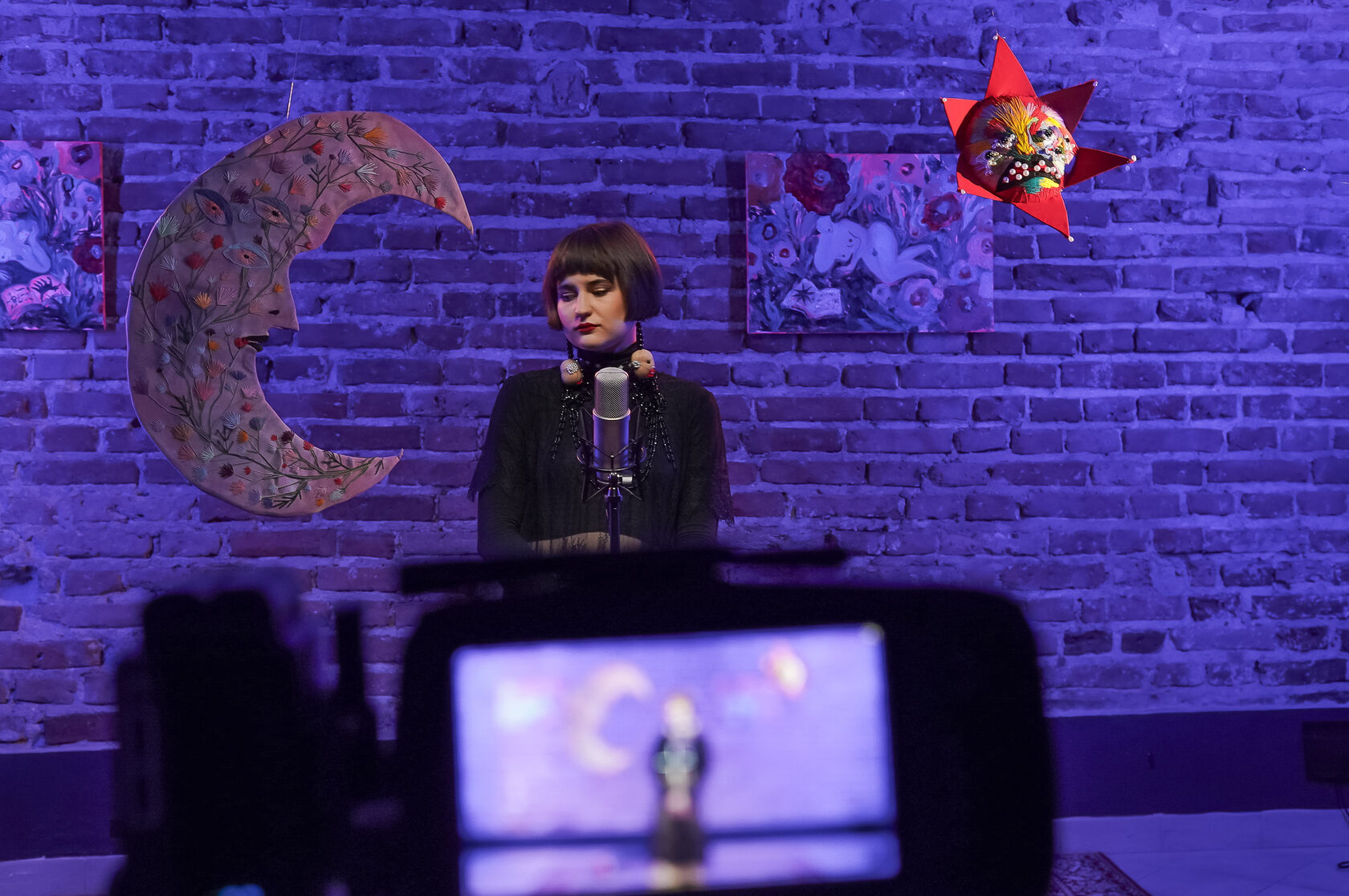
Musicians in exile are almost always behind these cases. Having suddenly found themselves in a new field, after a while they begin to explore it.
Discreet movement in the field of unmet needs
There is still no community that would care about the interests of Belarusian music. But individual teams are already taking certain actions on this field.
The community activities of Belarus Outside Sound System can be traced in two directions. For six months on their channel Belarus Music Export collected opportunities for the representatives of the music movement of Belarus. It is difficult to track how often they are used, but about 500 people at least follow the channel.
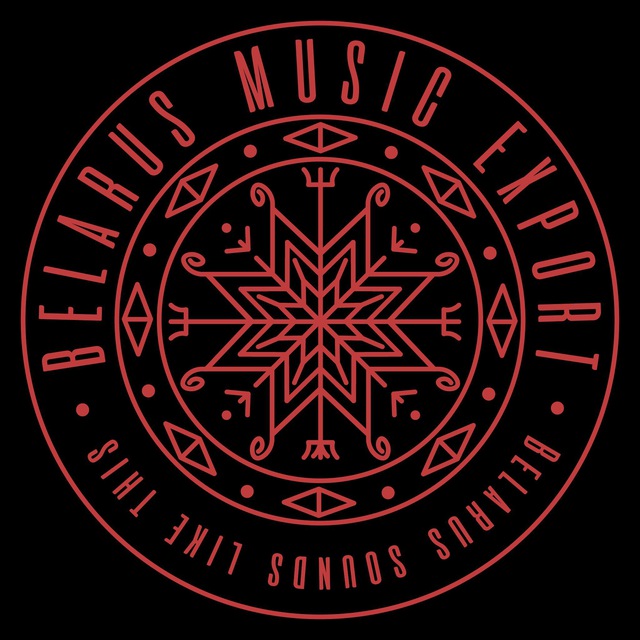
In the summer, the team organized a charity event in Warsaw, where they collected money for the children of political prisoners. Among other things, Anastasija Rydleŭskaja’s first performance took place at the festival, and she is confidently moving towards a permanent place on the Belarusian music map. Also we could observe a presentation of the project Wtbsk, for which Svieta Bień and Siarhiej Navicki teamed up.
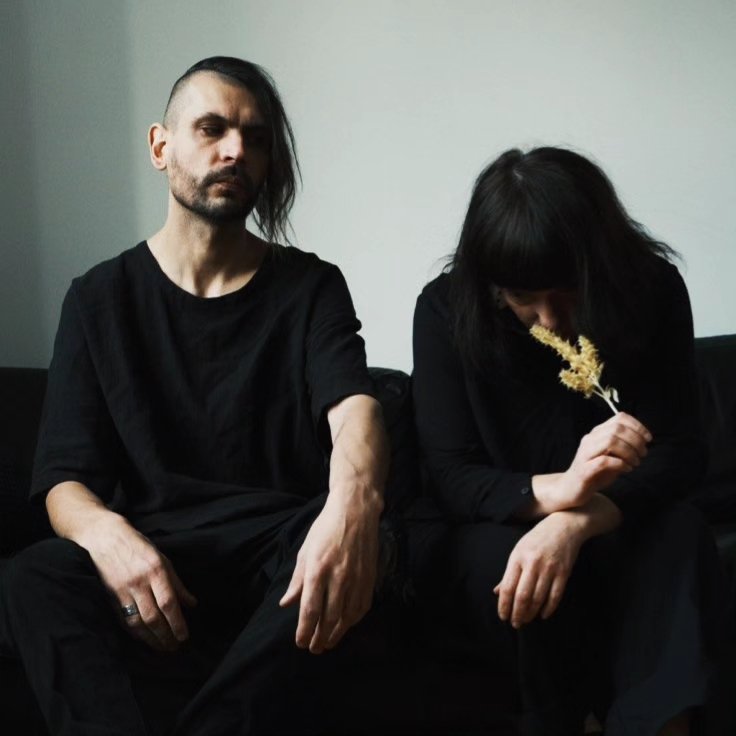
It seems that after these activities Belarus Outside Sound System has stopped for now, and despite certain expectations, the team has not disclosed new plans.
The team of the “Click” channel went beyond the limits of the publication about Belarusian music and shot a music video for Anastasija Rydleŭskaja. The result was a cinematic and spectacular video, in which about 50 people were involved.”Click” plans to shoot music videos for other artists as well. Such an aspiration grew out of observing the field and understanding that Belarusian musicians currently do not have a single video. And without a high-quality promotion, it is very difficult to promote one’s own work on any market or social networks. Rydleŭskaja’s case can be credited for the movement towards the expansion of the “Click” activities, but for now it is possible to notice an intention rather than a trend.
Musical life in Belarus
This year’s festival season in Belarus adopted last year’s trends and approaches in many respects. Sprava did not take place, and Vulitsa Ezha in its musical part limited itself with just cover bands. Festivals “Holiday of the Sun” and “Our Grunwald” in “Dudutki” gathered a line-up of Belarusian musicians. Large and commercial Viva Braslav traditionally focused on Russian stars and attracted a huge number of visitors: this year the organizers did not provide an exact figure, but last year it was about 30 thousand people. The same organizers are gathering a similar genre of artists for the second time in Niasviž, at the festival Wostrau.
In general, new events with pop artists began to grow like mushrooms. A number of Russian musicians performed at the lottery festival Belbet. New 4k fest invited Belarusian artists, but mixed the relatively alternative Bakiej, Kryŭdzin and Paŭlučenka with the winners of “Song of the Year of Belarus” and the finalists of the “Factor By” TV show.
Probably the most noisy new event for Minsk is FestiWow at the “Dynamo” stadium. In the line-up we see the bands «Три дня дождя» (“Three Days of Rain”), «Моя Мишель» (“My Michelle”) and Guf. The choice of artists easily fits into a clear logic: the lead singer of the band “Three Days of Rain”, for example, openly supports the war in Ukraine, and Guf has long been famous for his performances in Crimea and Donbass. The result: the concert in Minsk was attended by about 15,000 people.

Even more people – about 20 thousand – came to the “Солнцестояние” (“Solncestoyanie”) festival in Pružany. Old Russian rockers who, of course, also support the war, performed here: Kipelov, Babunets, Vadim Samoilov and so on.
However, the choice in Belarus is now very limited, as the “Slavic Bazaar” can be mentioned as well. They consider the performance of artists from “Chanson-TV” to be their most “soulful” concert.
If we consider smaller, but more alternative events, then the field has expanded a little: in Minsk, the “Reactor” club has reopened, which has been on hiatus since 2011. So far, they mainly play Belarusian or Russian metal in the evenings, and techno at night. Traditionally, there was more variety in “Brugge“, which was reopened in the winter, as well as in “TNT”, “Proletariat” and “Accidental Point”.
Organizing a concert in Belarus is still a difficult task which can be compared to a “quest”. The conditions for obtaining tour certificates can be roughly understood according to the application form for the performance of the “Reactor” club. Among other things, they immediately ask to submit a list of the set’s songs, as well as the full names and dates of birth of each member of the band. Permits, as well as bans, are issued in a haphazard and untimely fashion. You can still get a tour certificate only through someone from the Register, and here the Philharmonics are increasingly becoming friends of the alternative movement. Many concerts at the “Reactor”, for example, are sponsored by the Brest Philharmonic, and the 4kFest festival is hosted by the Minsk Philharmonic.
Festivals and concerts abroad
The majority of Belarusian music is mainly concentrated in Poland and primarily in Warsaw. But Białystok claimed the rights to musical life this year, where a concert venue Białystok Music Club was opened. It is taken care of by the association of musicians, and the club has been in existence for almost two years now. The creators decided not to stop at the community studio and the organization of concerts in a local pub – from the end of August they started developing a new venue. “Naviband”, “Relikt” and “Разбітае сэрца пацана” (“Raźbitaje serca pacana”) have already performed there, and it seems that this club is now motivating even those who didn’t think about playing in Białystok before. Belarusians appear where other Belarusians are already present.
The festival season kept the position of last year, and the main headliner this year was the band “Разбітае сэрца пацана” (“Raźbitaje serca pacana”), which played at almost every event. The festival Tutaka, which takes place on the site of the former “Basovišča”, grew into a three-day format and got its own train from Białystok. Krakow festival Letucień, although having problems with financing, gathered a good line-up and motivated Belarusians to come from different parts of Poland. Warsaw club festival “Грай” (“Hraj”) organized an almost classic rock scene and invited young musicians for the daytime part. Two established Warsaw festivals – Hučna Fest and Varušniak – surprised this season because they were arranged on the same day. Comments in the media prove that Hučna Fest organizers tried to agree with the other festival in advance and announced their dates, and the organizers of “Varušniak” decided to take other factors into account and really do not see a big problem in two festivals on one day.
Such things do not happen for the first time. For example, on June 1, five Belarusian music events were held in Warsaw at once. They were scattered all over the city, but during one time slot. Often, the organizers do not communicate with each other, and sometimes they ignore the events of their colleagues and create competition where it might not exist. It is even more difficult to understand if we mention the number of European cultural events that also attract the attention of the Belarusian audience. And although there can be enough of the Warsaw public for everyone, this behaviour of the organizers seems short-sighted.
Post-punk and its Belarusian critic
The band “Molchat Doma” presented the album “Belaya polosa”, which caused a heated debate and divided the Belarusian public into two camps. Some admire the new release and the development of the musicians’ sound. Others believe that there are too many borrowings in it, which reduces the artistic value. However, these opinions were heard only in comments on social networks. Major Belarusian media remained indifferent to the news: Onliner, for example, ignored the news, and Zerkalo mentioned the release only in the selection of news for September in the “Basement” section. Foreign media paid more attention to “Molchat doma”: they wrote about the album in Associated Press, Financial Times and other sources.

Regardless of the positive reactions or criticisms of the public, things are going well for the band. Their figures on Spotify alone reach 3.1 million listeners per month (bands “Foals” and “The Chemical Brothers” have comparable ratings). In October, the band went on a big European tour. Tickets for the concert in Warsaw sold out 2 months before the performance. So far “Molchat Doma” have performed in China. The band Nurnberg also has a similar tour geography: in the spring they played in seven cities in China, and now they are touring Europe with concerts.
Ratings attempts
In the last few years, the only “ratings” where Belarusian artists could get were the “Best Albums of the Year” lists according to the version of a certain publication, critic or listener. This year, we noted several attempts to stir up this situation, but all of them remained visible to an extremely narrow circle of people.
“New Belarus” started voting for the best soundtrack of summer 2024. You could vote for 5 days, and the Naviband song “Mama” won. It’s hard to say whether this rating is a true measure of listener interest, as it’s unclear how many users of the device voted. But there was no goal to interview as many people as possible.
The history of the award Uwaga! was a little different. It was positioned as the first musical award in exile. It appeared on the initiative of two people – the former director of the Minsk club “Graffiti” Alaksiej Ažohin and the radio presenter Maryna Savickaja. The goal was to support the musicians and the “feeling of home”, which, apparently, determined the further components. In order not to overlook anyone, 11 nominations were introduced. The first places for album and song of the year were taken by Leibonik, and the festival “Varušniak” was recognized as the best event. There were quite unexpected picks. The “Band of the Year” and “Performer of the Year” nominations were split, and the latter was divided between Alaksandr Pamidoraŭ and Ketevan. “Scena Chmielna” was recognized as the club of the year – at that time, the venue was actually the only Belarusian music club, and Belarusian Youth Hub and Belarusian House in Warsaw competed for the title as well. In general, the saddest thing here is that the event did not attract the attention of even persons involved in musical life. About 50 people attended the award ceremony. Even some of those who were supposed to receive an award didn’t come to the event. No one argued on social networks and left neither a happy review nor a disappointed post.
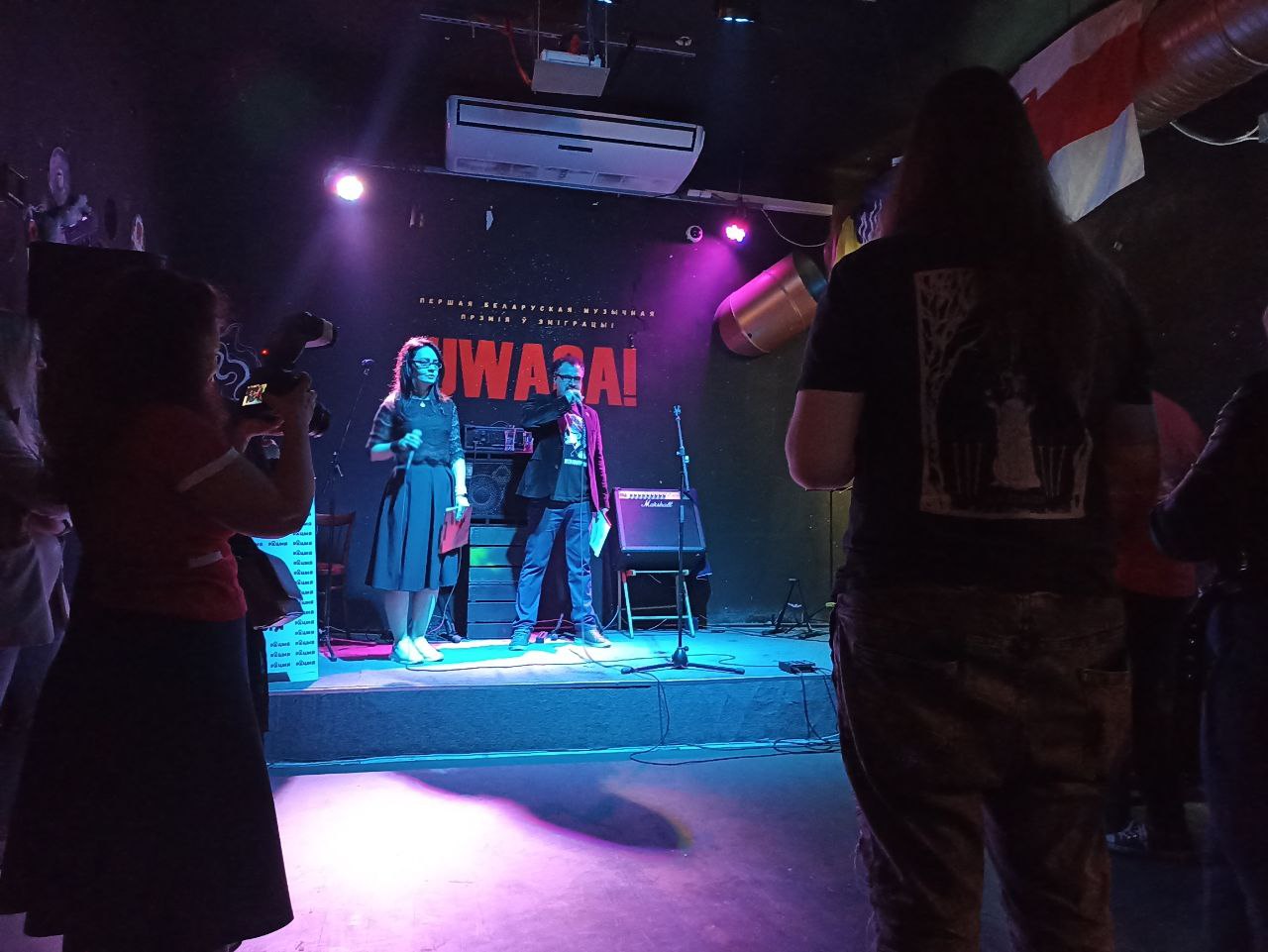
One way or another, the fixation of events, opinions and at least some movement beyond music releases should exist, and it’s pleasing to see the ideas in this direction, but the form is clearly not working yet.
Art: body language, actionism and appeal to nature
It is difficult to keep up with the number of events, the geography of everything Belarusian has long been wider than the contours of the country. In the weekly schedule, only Monday will not be affected by an opening event or any other cultural activity, but even this day is only a formal day off, because the Internet does not stop working, giving reasons for reflection on our art. In six months, 240 times – and, most likely, we are mistaken – viewers have encountered artistic expressions of Belarusians in the public space. It has long been impossible to grasp the immensity. We can only modestly hope that in such a flow and number of events sense and value will not be lost.
National discourse vs. common world
The press does not allow us to deviate from the current agenda, but between the main threats – war and imprisonment – most Belarusian media still do not pay enough attention to cultural genocide. As if what destroys is more important than what creates. Or maybe not everything is so bad with our art and the art itself will be able to testify to two important things that characterize the achievements of culture: human freedom and our ability to self-realization? Perhaps it is precisely in such a time of dehumanization, and further – the era of new technologies of a frantic pace, which strive to escape from our control, that body language becomes especially actual, and the image of a decaying person is changed by the presence of his/her figure as an artistic object. Performativity seems to be the most noticeable trend in contemporary Belarusian art. In such a brief overview, it is impossible to consider in detail the entire variety of plastic and thematic solutions within this genre, all the more accurately analyze its form.
We may see the obvious aspirations of artists to go beyond the boundaries of a specific genre. Lack of attention, the complexity of socialization and the egocentrism of creators lead not only to simple language, but also to a theatrical, eccentric explosion. The desire to restore the integrity of what was lost and at the same time the desire to become part of a common new world leads to the Society of the Spectacle. This can be evidenced by the desire to involve in the work as many as possible not only ideas and meanings, but also participants. Socialization and mutual exchange, overcoming isolation and limitations of competence lead to a euphoric feeling of a surprise event, the discovery of the unknown. However, unrealized hopes turn into sad rallies of the happening on the contrary. Therefore, the movement itself – body, object or image – strives to become a metaphor for life, but it is a search for form and a long-standing struggle with the insoluble question of time. Images have long since turned into sounds, and sound has become a part of visual culture, and we hear this cry like the roar of the artist’s stripped body.
25.05.2024
- Iryna Anufryjeva, Diamanda Galás
- Dni Sztuki Współczesnej: Void / Pustka
- Akademia Teatralna im. A. Zelwerowicza
- Białystok
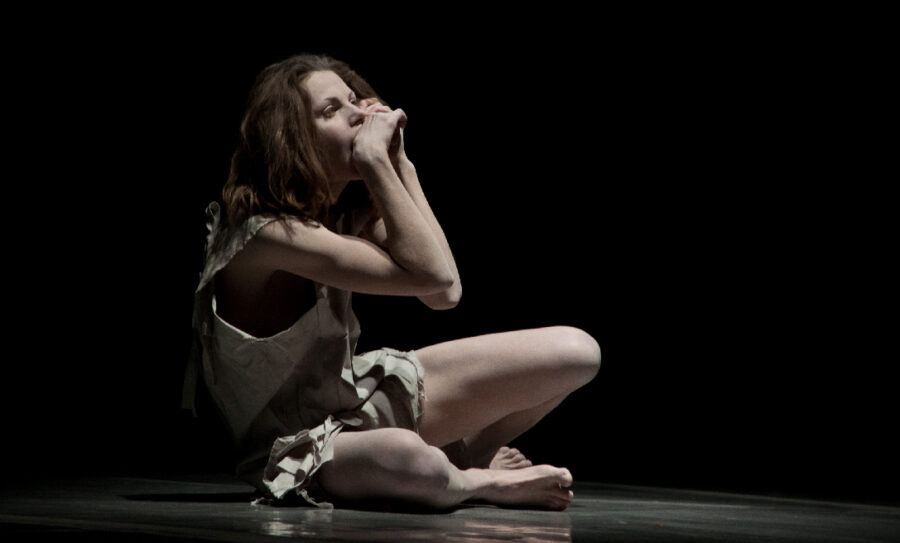
14.06.2024
- Vola Sasnoŭskaja and Elske Rosenfeld
- Archive of gestures: becoming in/visible
- Biennale Ve věci umění / Matter of Art
- Národní galerie Praha – Veletržní palác
- Prague
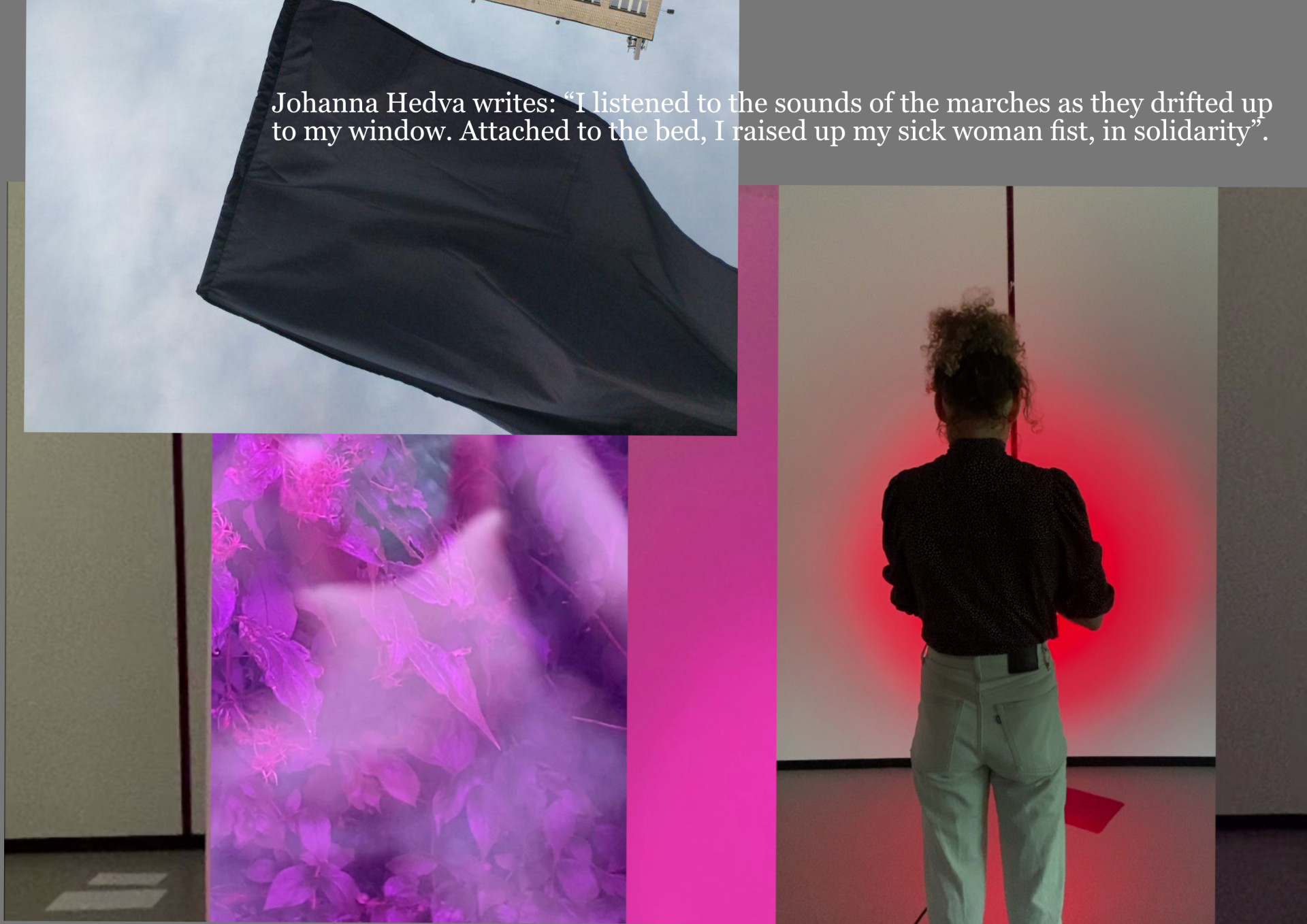
8.06.2024
- Evielina Domnič and Dźmitry Hielfand
- Force Field
- Tumult #6: Alchemy Unveiled
- Willem Twee Toonzaal
- s’Ertachenbos
Actionism has truly become a media event this season, full of controversy and debate, bringing back a sense of social revolution and going beyond the narrow national discourse. The action remains an instrument not only of political protest, but also reminds us of the autonomy of radical artistic expression, which is not so easily controlled and commercialized.
07.06.2024
- Jana Šostak
- Otwarta pracownia
- Łzy szczęścia
- Zachęta – Narodowa Galeria Sztuki
- Warsaw
29.07.2024
- Alaksiej Kuźmič
- Renaissance
- Tombe de Vincent van Gogh à Auvers-sur-Oise
- Auvers-sur-Oise
Nature as a living space for creativity
Nature becomes a logical continuation of the theme of man and, perhaps, in some sense, even salvation. “To hide in potato bushes”, “to run to the forest” is a natural state during war and persecution. Where full-fledged political and cultural action is impossible, the biofactor plays a special role – not only psychologically and therapeutically, but also aesthetically. Here, in human deserts and uncontrolled spaces, there is room not only for freedom, but also for education: nature always teaches new forms. As well as a real understanding of the global ecological threat, talking about which during the return of atomic weapons to our territory is a continuation of the traditional political movement for Belarus. We should not fall into the illusion of insufficiently surmounted romanticism of national neo-paganism, we should rather turn to the real scientific principles of studying the world.
05.04.2024
- Jahor Jahunoŭ
- Terra Morf
- Skovhuset Kunst & Natur
- Værløse

12.04.2024
- Emil Ziańko
- Greenhouse
- Galeria Sztuki Współczesnej Slendzinskich
- Białystok
20.08.2024
- Echo, Bazinato, Miła Kotka
- Natureza Urbana
- CCBB / Centro Cultural Banco do Brasil
- Brazil
07.09.2024
- Jura Šust
- The 15th Gwangju Biennale. Pansori, A Soundscape of the 21st century
- Gwangju Biennale Exhibition Hall
- Gwangju

Resistance, war, solidarity
The inability to resolve political problems exclusively through artistic means inevitably leads to a decrease in activity in this field. But the very existence of contemporary art for the Belarusian context is a political issue. After all, it is precisely that what is responsible for the cultural state of the nation, it is precisely that what testifies to its peculiarities and responds to the most uncomfortable topical issues beyond the boundaries of propaganda and taboos, beyond the boundaries of narrow national problems. Therefore, resistance and struggle have not ceased to be important manifestations of socio-politically oriented art, especially in such symbolic things as war and solidarity with Ukraine.
13.04.2024
- Jaŭhienija Doŭhaja
- Mauermuseum – Museum Haus am Checkpoint Charlie
- Berlin
08.05. 2024
- Vadzim Kačan, Taćciana Savik, Julija Ciareška, Alaksandr Truskoŭski, Jelizavieta Jankova
- curator: Dzina Daniłovič
- The earth bleeds with history
- NCCA / National Centre for Contemporary Arts
- Minsk
6.08.2024
- Aleś Puškin, Rufina Bazłova, Alaksandr Vasiukovič, Jolanta Kiljan,
- Janak Koŭziel, Maksim Tymińko, Antoś Cialežnikaŭ, Jana Šostak, Raman Šeł
- curator: Andreĭ Dureĭka
- Aleś Puškin. Afterlife
- Free Belarus Museum
- Warsaw
29.08.2024
- curators: Alaksandr Kamaroŭ, Maryna Konieva, Taćciana Kačubinśka, Antanina Sciebur, Maksim Tymińko
- Відчуття безпеки / Sense of Safety
- ЄрміловЦентр / YermilovCentre
- Kharkiv
We have always wondered why the Belarusian nomenclature, despite all the regime’s efforts to politically integrate with the East, ignores the fact that most cultural and intellectual events take place in the West. Why are Warsaw, Berlin, and Vilnius still the most important cities for Belarusian art? It seems that the historical memory of unity with Europe and overcoming borders in various senses will gain more and more strength.
13.06.2024
- Alaksandr Adamoŭ, Nadzia Sajapina, Jana Šostak
- Testimony. Boris Lurie & zeitgenössische Kunst aus mittel und Osteuropa
- Neues Museum Nürnberg
- Nürnberg
03.07.2024
- Alaksiej Łunioŭ, Raman Traciuk, Siarhiej Šabochin
- Schron miłości
- Dark Angels
- Poznań
5.09.2024
- curators: Kaciaryna Kardončykava, Kaciaryna Davydova-Visockie, Rusłan Vaškievič
- Strana Oz
- DK gallery
- Minsk
29.09.2024
- Siarhiej Šabochin
- Szczelina. Counter Monumental Queer
- Biuro Wystaw
- Warsaw
Sometimes such reviews mix artistic, cultural and even social trends. Of course, we live in a time of long-legitimate social plasticity, interdisciplinary projects, experiments and search for new forms of action. Therefore, it is worth paying attention to the self-organization and emergence of new artistic structures, despite their parallel destruction and ban in Belarus. Over the past six months, not only have well-known organizations continued to actively operate, but a whole range of different art structures has also appeared: residencies and grants, studios and cultural spaces, associations and festivals, mass media and integrated curatorial projects.
Minsk State Art College named after A. Hlebaŭ
opened a new college building, built on the former site
Mochnarte Fоundation
foundation and residency for artists in exile
Fundacja KUT
cultural organization and space
PhotoArtDoc
a photography festival, with a theme at the intersection of documentary and art
What’s next?
In new circumstances, when changes occur in society and culture, it is natural to search for new plastic means. Rethinking how art can reflect the current state of affairs is a crucial part of professional activity. The language used by artists is not always completely original; this is due both to the previous tradition and to the rethinking of new influences. This is especially noticeable in the international context, when differences in cultural and political conditions outside the country give artistic means a different meaning and change stylistic priorities. There is an orientation towards scientific principles and the use of new technologies. Along with 3D modeling, elements of programming are gradually entering video, photography and plastic arts. But in parallel, there is also work with the “truth of the material”, and sometimes both trends are present within the same project. Perhaps this is not only synthetic work, but also an eclectic testimony to our transitional era.
5.04.2024
- Evielina Domnič and Dźmitry Hielfand
- festival FAUN
- Beyond the Sound
- House of Arts
- Brno
17.04.2024
- Hleb Amankułaŭ
- Teilzeit in Senile Ties
- Commune Gallery
- Vienne
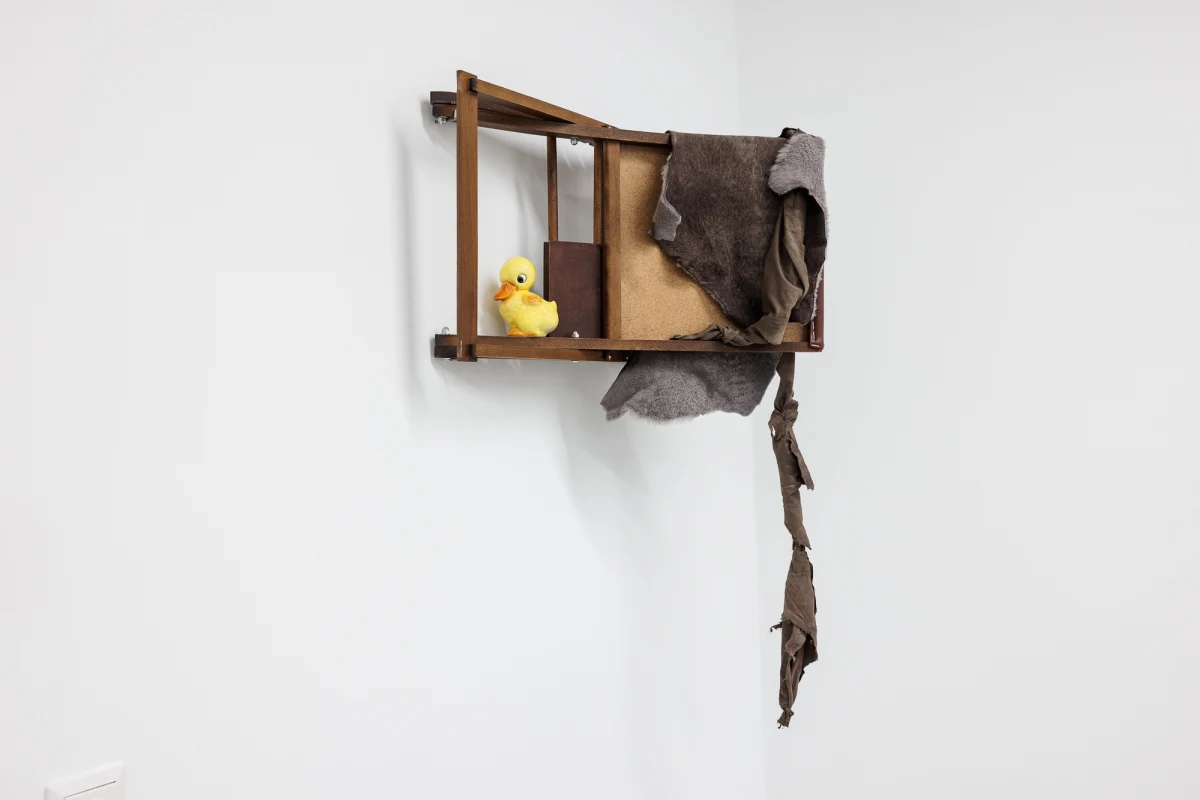
22.06.2024
- Shklatar / Vasilisa Palanina, Alaksandr Adamoŭ, Andrej Anro
- Cichy Czas
- Shklatar Gallery
- Warsaw
19.09.2024
- Ała Savaševič
- 1374
- astcontemporary
- Milan
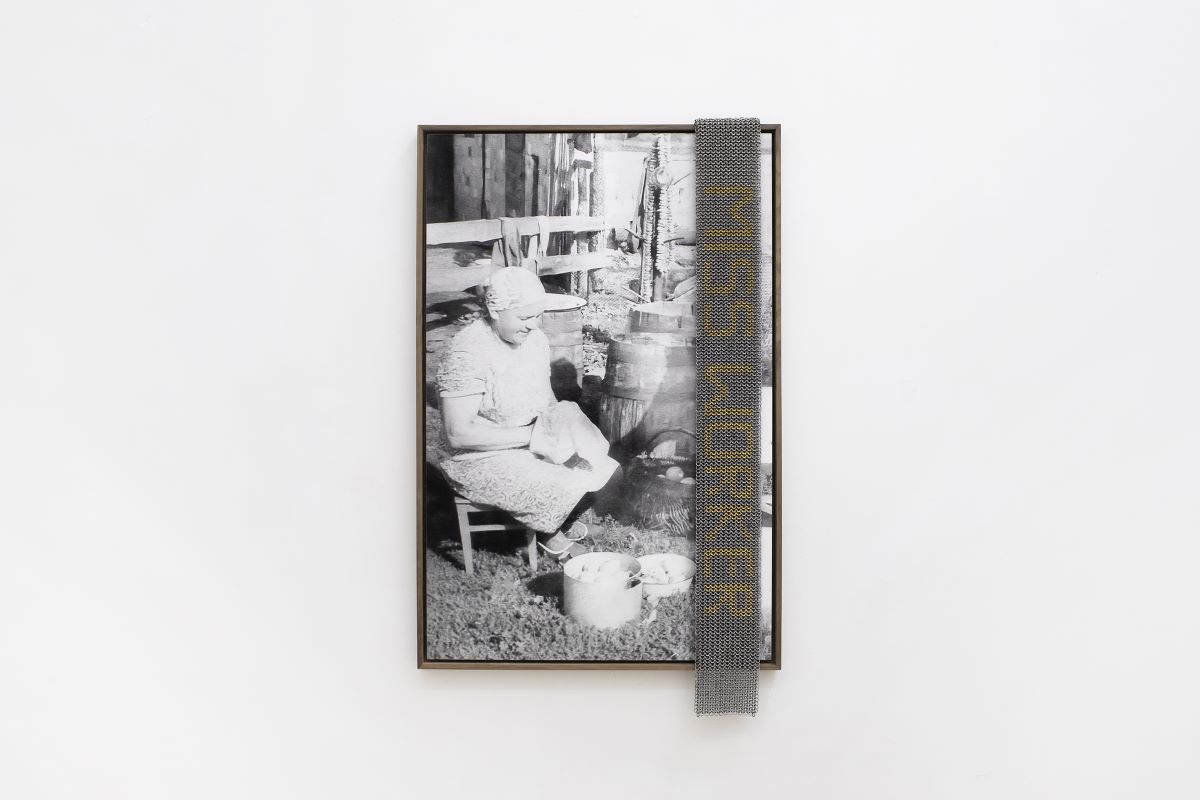
Photography as a medium remains very presentable and diverse in Belarusian fine arts. The camera, as a tool close to the expression of reality, corresponds to both the speed and the truthfulness of the depiction of the current moment. However, a much more diverse use of photography has long been observed, going beyond the chronicle of time and documentary. It is difficult to find at least one modern Belarusian artist who would not use photography for collage, montage, video, installations and even performances. And although photorealism remains the dominant style, which has been dragged on for a century by the yoke of technically armed academism, the most radical conceptual photo transformations are directed not only towards abstraction, but also towards a complete denial of the image, transforming into sound and word, challenging the dominance of factography.
11.04.2024
- Aryna Jesipovič
- Palimpseste
- Fotoforum Dresden
- Dresden
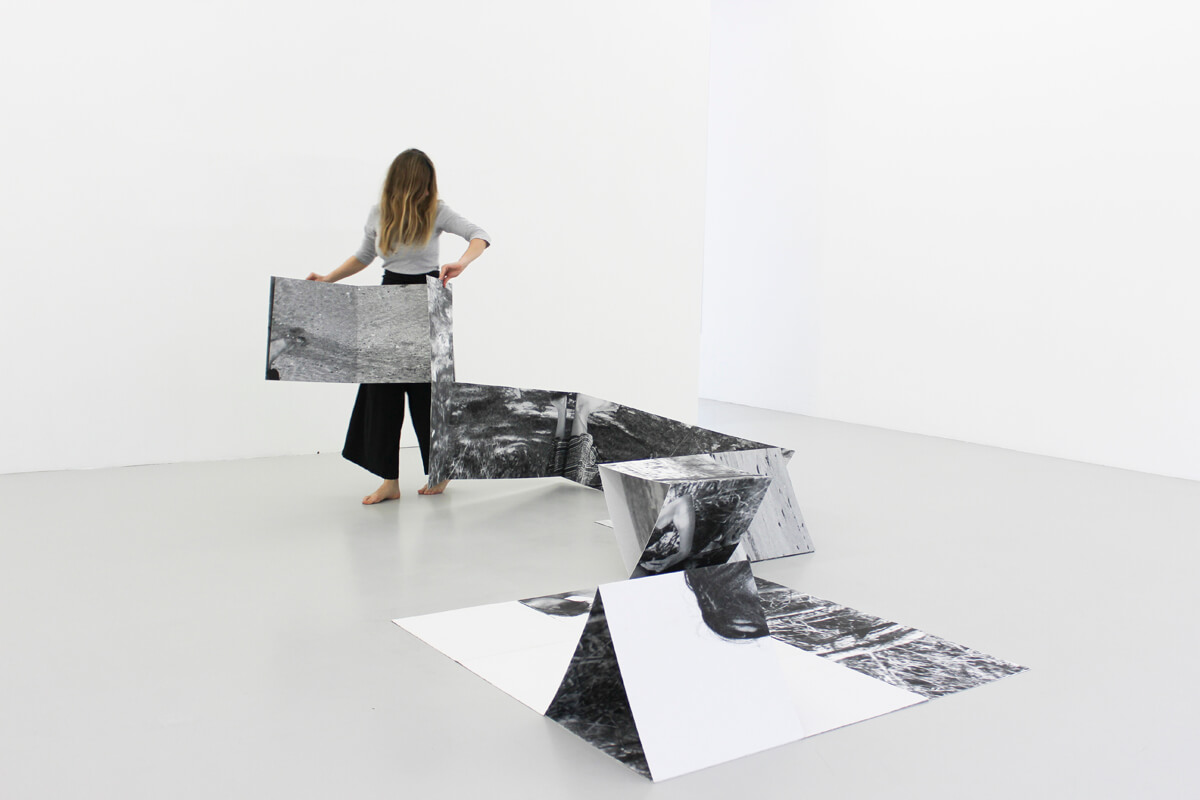
4.07.2024
- Ihar Nikałajenka
- curator: Nadzieja Chmyl
- I’m not bored
- Memorial Museum-Workshop of Z. Azhur
- Minsk
2.09.2024
- Kaciaryna Kuźmičova
- Betonium
- galeria MD_S
- Wroclaw
The creation of paintings still fascinates a huge number of artists. In today’s Belarusian art, the influence of photography on drawing remains tendentially unchanged. Sometimes it seems that many artists who resort to this traditional practice are overly dependent on photographs, ignoring the basics of vision, and even more so the philosophical understanding of the physics and chemistry of colours with paint and painting as an idea. Their trust in photography seems stronger than in reality and their own eyes. It seems like some kind of game and compromise towards a business strategy that meets the taste of the bourgeois, fascinated by a slight surrealist deviation. It seems that radical concepts of painting are represented in our art only in some exceptional cases, and a wider circle still simply illustrates everything with paints.
And, it is clear that vivid expression and stylization towards direct primitivism will counter this trend, but will this really be the path to an answer about the painting of our time?
12.04.2024
- Viktar Siarhiej
- A Little Strange
- CreateCulture Space
- Vilnius
19.04.2024
- Illa Spryndžuk
- Process: Point of no Return’
- Marszałkowska 18
- Warsaw
21.09.2024
- Taćciana Karpačova, Maryja Łasmakova / 2212
- Abandoned New Position
- Pilotenkueche
- Leipzig
12.09.2024
- Zachar Kudzin
- Phenomenon / З’ява
- NCCA / National Centre for Contemporary Arts
- Minsk
Reaching the world level
The creation of paintings still fascinates a huge number of artists. In today’s Belarusian art, the influence of photography on drawing remains tendentially unchanged. Sometimes it seems that many artists who resort to this traditional practice are overly dependent on photographs, ignoring the basics of vision, and even more so the philosophical understanding of the physics and chemistry of colours with paint and painting as an idea. Their trust in photography seems stronger than in reality and their own eyes. It seems like some kind of game and compromise towards a business strategy that meets the taste of the bourgeois, fascinated by a slight surrealist deviation. It seems that radical concepts of painting are represented in our art only in some exceptional cases, and a wider circle still simply illustrates with paints.
And, it is clear that vivid expression and stylization towards direct primitivism will counter this trend, but will this really be the path to an answer about the painting of our time?
No matter how difficult the current situation in our culture may seem, despite the paradoxical cultural terror in the country, contemporary Belarusian art has confirmed its ability to become part of world artistic processes and events. This half-year has seen real achievements that we have been waiting for over many years. This is not only the participation of our artists and curators in biennials and festivals, including the famous Venice Biennale, the main programme of which included a curatorial project with a happening “Children Everywhere”. Based on the experience of the School of Architectural Thinking, it reflects how the problems of society are reflected in the worldview of children and how children can explain to us much more about the real state of affairs through play.
Even more important seems to be the curatorial activity in the creation of large international projects, such as the Prague Biennale / Biennale Ve věci umění / Matter of Art. The curators managed to build a very specific single space of the main exhibition on the principles of openness, transparency and interaction, as well as create a wide programme of events and discussions on the topic of the village as a space of social and historical changes and the future of labour movements for solidarity and justice. And, of course, it is worth mentioning the project of a large team of Belarusian curators in collaboration with Ukrainian colleagues from the “YermilovCentre” / “ЄрміловЦентр”. During the creation of the exhibition “Відчуття безпеки / Sense of Safety”, they found themselves in the vanguard, in the exact militaristic sense of the word, during the massive bombing of Kharkiv by Russian troops. The encounter with death of the individuals who visited the exhibition leaves no distance between art and the tragedy of life and gives even greater meaning to the video project Bridge of Solidarity, which unites more than 20 art institutions around the world and confronts the destructive spirit of war, creating new networks not only between artistic but also human mutual support.
17.04.2024
- curators: Alaksandr Novikaŭ and Alena Karpiłava
- Venice Art Biennale 2024
- Bambini Ovunque / Дзеці паўсюль / Children Everywhere
- Architectural Thinking School for Children
- Foreign Pavilion
- Venice
06.06.2024
- curator: Viera Załuckaja
- Kate Ngan Wa Ao, Razalina Busieł, Uładzimir Hramovič, Olga Anna Markoŭska, Lesia Pčołka, Katažyna Siankievič, Jahor Jahunoŭ
- Copenhagen Photo Festival
- We’ll Hold a Wedding on Your Graves. Beyond VEHA Photographic Archive
- Pop Up Copenhagen
- Copenhagen
13.06.2024
- curators: Alaksiej Barysionak and Katalin Erdődi
- Uładzimir Hramovič, Vola Sasnoŭskaja, eeefff group /Dzina Žuk and Mikałaj Spiasiŭcaŭ
- Biennale Ve věci umění / Matter of Art
- Národní galerie Praha – Veletržní palác
- Prague
And we want to rely on the curatorial potential of new international experience. Volha Archipava, Taćciana Arcimovič, Alaksiej Barysionak, Dzina Daniłovič, Iryna Hierasimovič, Aksana Žhiroŭskaja, Viera Złuckaja, Julij Iluščanka, Alaksandr Kamaroŭ, Volha Kapionkina, Hanna Karpienka, Valancina Kisialova, Volha Klip, Vasil Matalaniec, Volha Mželskaja, Palina Labichava, Siarhiej Michalenka, Liza Michalčuk, Mikita Monič, Illa Padałka, Łara Pierski, Lena Prenc, Volha Rybčynskaja, Saša Rejzar, Safija Sadoŭskaja, Antanina Sciebur, Lizavieta Sciacko, Maksim Tymińko, Nadzieja Chmyl, Hanna Čystasierdava, Siarhiej Šabochin – these are the individuals whose work is worth paying attention to.
Author: Analytical Group of the Belarusian Council for Culture
